DashClicks Blog
The industry's top experts offer their best advice, research, how-tos, and insights—all in the name of helping you level-up your business and online marketing skills.
Join Us!

Remove Your Agency’s Pain Points by Outsourcing Your SEO
As your agency gains momentum — landing more clients, expanding service offerings, and setting higher revenue targets — you might expect things to get easier. After all, more clients should mean more income, right? In reality, many agencies encounter the opposite: growth often exposes hidden inefficiencies and amplifies existing bottlenecks. What once worked for a smaller team now struggles under increased demand.
SEO, in particular, becomes a sticking point. Unlike tasks that scale linearly, SEO requires ongoing research, content creation, audits, technical fixes, link-building, and strategy adjustments. Each client adds layers of complexity: different industries, unique keywords, evolving algorithms, and varying expectations for reporting and communication. Trying to handle all of this with a small or overstretched internal team often results in missed deadlines, inconsistent results, and frustrated clients.
Consider the operational overhead involved: new team members need onboarding and training, tools require licenses and updates, and campaign strategies must be coordinated to avoid duplication or conflict. These factors add time, cost, and stress, but they rarely get accounted for in simple growth projections.
A quick statistic illustrates the importance of consistent delivery: agencies retain clients, on average, 2 to 5 years. Long-term partnerships are possible, but only if clients see reliable performance. If deliverables slip or campaigns underperform, clients begin questioning the value of your services, regardless of how talented your team is.
The hard truth is that agencies don’t fail primarily due to a lack of clients or demand. They fail because their operational capacity doesn’t match their growth ambitions. Without aligned systems, scalable workflows, and sufficient bandwidth, even the most promising agency can get stuck in a cycle of overcommitment and underdelivery.
This is where outsourcing SEO — particularly through white label SEO partners — transforms from a simple staffing solution into a strategic growth lever. By delegating complex, time-intensive tasks to experts, your agency regains control over its operations. You can scale client acquisition without overloading your team, maintain consistency in deliverables, and free leadership to focus on growth, strategy, and client relationships. Outsourcing SEO is no longer just a way to get more hands on deck; it’s a method to align capacity with ambition, turn bottlenecks into predictable workflows, and invest in both profitability and long-term client retention.
The Hidden Cost Centers That Drain Agency Profitability
Most agencies know time is money. But beyond tools and salaries, there are less visible inefficiencies that eat at margins and frustrate teams. Here are four big ones — and how outsourced SEO helps.
- The Knowledge Drift Problem: Multiple in-house SEOs may use different frameworks or methods. Over time, strategy fractures. Clients see inconsistent approaches. Rankings fluctuate. Expertise looks sloppy. A white label SEO partner usually has consolidated methods — unified frameworks, standard operating procedures, consistent strategy playbooks. That reduces ranking volatility and client confusion.
- Invisible Downtime Cost: Hiring pauses. Team transitions. The learning curves. Even when things appear idle, there’s revenue stalling. When you outsource, you get teams that are always “on.” No big gaps while someone is being hired. No lost momentum when an internal resource leaves. Delivery continues, pipelines stay intact.
- Data Fragmentation Across Clients: When accounts are handled individually — different dashboards, different reporting formats — it’s hard to see patterns. Are clients in the same niche having similar needs? Is there a macro trend in engagement or content effectiveness? White label SEO providers often build shared analytical frameworks. Those give agencies insights across the portfolio. You see what works overall, and what’s niche-specific.
- Strategic Myopia: When internal teams are busy executing, leadership tends to get trapped in day-to-day issues. Strategy, positioning, scaling, upsell conversations — those suffer. With outsourcing, execution becomes someone else’s problem. Leadership can move up in perspective: focusing on growth, new opportunities, partnerships, and client experience rather than tracking every deliverable.
How White Label SEO Removes Deep-Rooted Pain Points (That Internal Hiring Can’t)?
Outsourcing SEO isn’t just shifting work. It changes how work flows. It realigns capacity, strategy, and risk. Here are four ways the deep pain points can be addressed — in ways that internal hiring often can’t match.
1. Operational Leverage: From Reactive to Predictable Delivery
When you outsource, workflows come pre-built. QA layers, project management, delivery checklists, automated reporting — all of that helps make delivery predictable. For example, agencies using more systemization often see weekly deliverables multiply.
Insight: Predictability matters. Client reporting and transparency show up as critical to client retention.
2. Cognitive Load Relief for Leadership Teams
Founders often double up as strategists, account managers, and SEO experts. That divided attention drains creativity and decision-making. Outsourcing frees up that mental bandwidth. Once execution is handled, leaders can focus on positioning, exploring new verticals, refining premium offerings, or forging partnerships.
3. Cross-Functional SEO Intelligence
White label SEO providers work across many types of clients, niches, and market situations. They see what moves the needle in e-commerce, law firms, local service businesses, SaaS, or others. That gives you access to more data: which content formats are converting, what technical changes bring quick gains, and how user behavior differs by niche. You get that without huge R&D.
4. Risk Distribution & Quality Insurance
With internal teams, a single bottleneck — someone falling sick, someone leaving, someone mismanaging a project — can mean missed deadlines, unhappy clients, lost renewal chances. When you outsource to a reliable partner, risk spreads across more people and more systems. Delivery doesn’t hinge on a few individuals. Quality control tends to be built in. That stability builds trust with clients, which is hard to price but vital in retention.

Transforming Pain Into Profit: The Hidden ROI Levers of Outsourced SEO
Outsourcing isn’t just cost-cutting. It opens up revenue and profit levers that are otherwise harder to unlock.
- From Cost to Capacity Conversion: Every rupee spent on a white-label partner becomes billable output rather than internal overhead. You reduce hiring, training, tool subscriptions, and benefits management. Agencies report that white label SEO can yield gross margins in the 40–50% range in many cases when handled well.
- Client Stickiness Through Depth of Expertise: Clients notice specialist-grade work. When you deliver strategic insights, niche-specific case studies, solid link-building, and clear technical SEO, clients perceive higher value. That helps with renewals. White label SEO providers let you offer that depth across niches without keeping a huge, specialized internal team.
- Frictionless Cross-Service Synergy: SEO doesn’t exist in a vacuum. Content, PPC, CRO, and social—all feed into each other. The data you gain from outsourced SEO (keywords, content performance, site speed, technical improvements) can enrich other services. Agencies that integrate SEO insights into their PPC, CRO, or content work often see higher retention.
- Revenue Elasticity: Sometimes, business ebbs and flows: seasonal demand, new client wins, project peaks. If your internal capacity is fixed, you either overhire (costly) or drop opportunities. Outsourcing allows you to scale up or scale down more fluidly. You keep margins healthier, avoid burnout, and accept high-value work without fear.
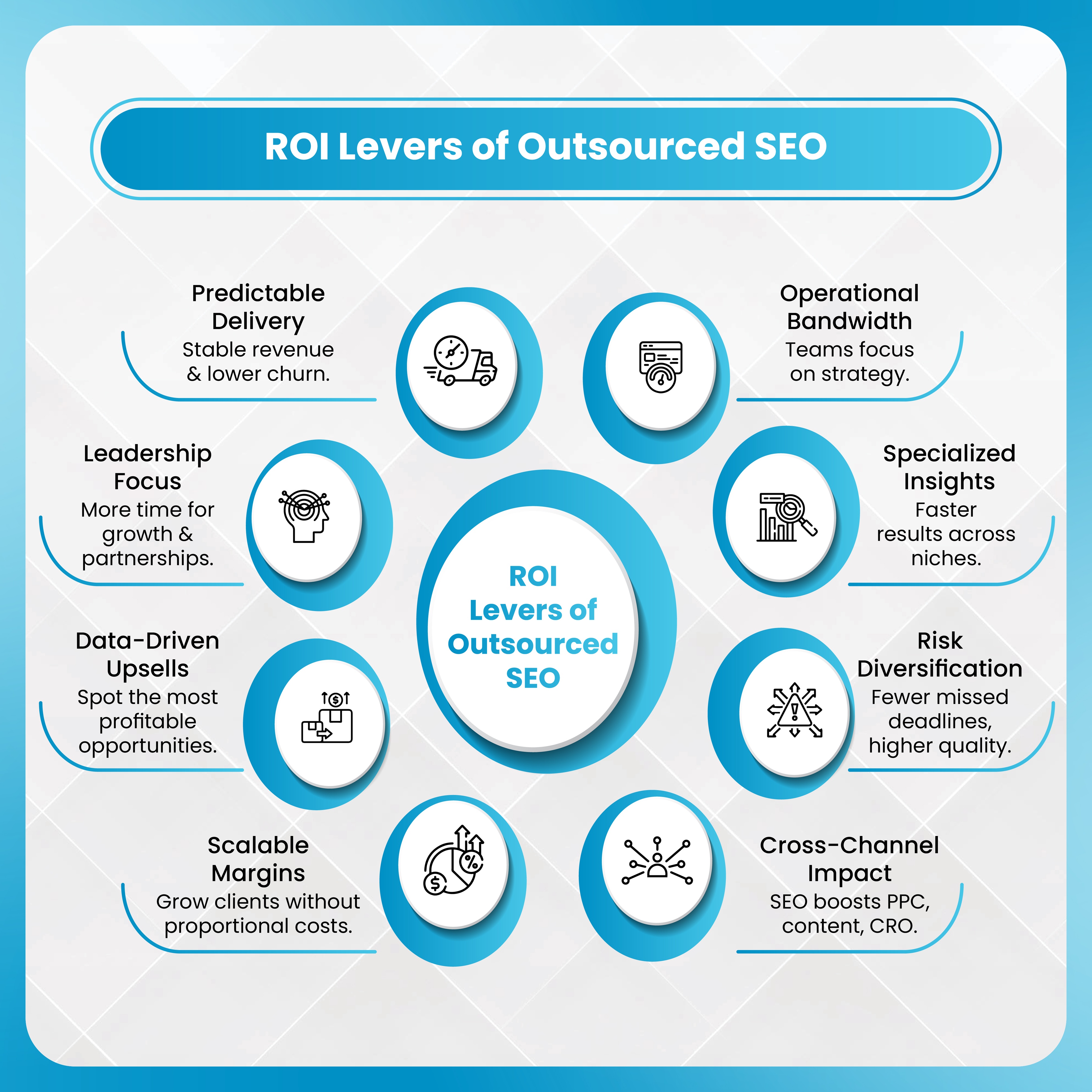
Unique Outsourcing Models & Strategies Agencies Should Consider
Not all outsourcing is the same. How you design the model matters. Here are some approaches that agencies often adopt.
- Hybrid Pod Model: You keep strategic roles in-house (account leads, client strategy) and delegate execution (content, link building, technical SEO) to your outsourced white label team. You maintain creative control and maintain client brand voice while scaling execution.
- Elastic Capacity Model: Treat your white-label partner as an extension — you tap into them when demand rises, relax when it’s lower. This avoids fixed overheads.
- R&D Partnership Model: Instead of just buying fulfillment, collaborate on frameworks, tools, or special offerings. For example, develop a “voice search readiness” package or a local SEO boost together. That helps differentiation.
- Silent Integration Model: The outsourcing remains invisible to your client. Reports, dashboards, and deliverables carry your branding. Clients see you as the full-service agency. You own the relationship; they see consistency.
- Tiered Outsourcing Model: Segment your clients:
Premium clients → more strategy + hybrid execution
Mid-tier clients → full white-label execution
Entry clients → automation-heavy delivery with standard white-label support
Align delivery complexity with what clients pay. - Shadow Team Retention Model: Keep a small internal “success” or “client-facing” team that handles storytelling, reporting, upsells, and relationship management. Let white label partners handle the heavy lifting behind the scenes.
How Outsourcing SEO Helps with Client Retention?
Retention isn’t just a metric. It’s your agency’s lifeblood.
- Consistent, High‑Quality Output: If deliverables are late, uneven, or variable, clients notice. By outsourcing, you get more predictable quality. That consistency builds trust.
- Transparent Reporting & Communication: White label SEO agency often come with dashboards or reporting templates you can brand. Clients get clear visibility into what’s happening. That reduces friction and surprises.
- Ability to Quickly Adapt & Add New Services: As clients grow, their needs shift — maybe into international SEO, local search, content expansion, or richer technical audits. Having outsourced capacity means you can shift gears fast, without hiring or retraining.
- Improved Value Per Client & Lifetime Value (CLV): When you deliver more value (better rankings, better content, faster fixes, better technical health), clients are more likely to stay, pay more, or accept upsells. More value per client means CLV rises, which compounds your profit.

DashClicks’ White Label SEO: A Pain‑Point‑Oriented Model
DashClicks understands the stress points agencies face because it built its white Label SEO services not just as a package, but around solving those pain points.
- End‑to‑End Fulfillment: Whether it’s technical SEO, on‑page optimization, local SEO, link building, or reporting — DashClicks delivers all these as white label services under your agency’s brand. You don’t need to assemble a new team or juggle vendors.
- Data Unification: DashClicks provides a centralized dashboard for campaign insights. That means analytics, keyword tracking, content performance, link metrics, and progress reports are all visible in one place. No more cycling through multiple tools or getting lost in mixed reports.
- Transparent Workflow: With processes and deliverables clearly defined, your clients see measurable SEO progress, while you keep brand control. The strategy alignment, timelines, and communication flows are smooth. This reduces internal friction and client confusion.
By integrating with DashClicks, agencies get execution strength and operational clarity. The noise — of trying to manage many moving parts — drops sharply. What you pay for is reliable, measurable delivery, not drama or missed deadlines.
Measuring the Pain Removed (and ROI Gained)
If you’re considering outsourcing, you want to see what shifts when you do. Here are metrics to watch — and what industry data points to suggest they can move.
- Time‑to‑Delivery Compression: Deliverables that once took 4‑6 weeks (site audits, content batches, technical fixes) may drop to 2‑3 weeks when handled by experienced external partners. The internal hand‑offs and onboarding delays get minimized.
- Retention Delta: Client lifetime tends to increase. Client contracts often extend when quality and consistency improve.
- Margin Expansion: Because you’re not paying full internal salaries, overhead, or duplicating tools, your gross margins improve. Studies of white label SEO suggest agencies see profit margins of ~40‑60% when outsourcing fulfillment carefully.
- Predictive Forecasting: With a white‑label partner managing consistent deliverables and reporting, you can more accurately forecast workloads, revenues, and renewal rates. That leads to better financial planning, fewer “surprise months,” and more confidence.
Conclusion: From Pain Management to Strategic Liberation
Growing an agency is messy. The more clients, the more moving parts, and the higher the risk that something — quality, delivery, client satisfaction — will slip.
But outsourcing SEO via a trusted white label partner doesn’t mean giving up control. It means choosing what you give up (operational chaos, risk, unpredictable delivery) so you can keep what matters (client satisfaction, reliability, high margins, and growth).
If you free up your capacity, you’re not just reducing pain — you’re reclaiming the space to think ahead: new services, new verticals, better relationships. You turn reactive chaos into predictable performance. You turn retention from an afterthought into an outcome.
If you’re ready to remove your agency’s pain points — from delivery bottlenecks to strategic overload — give DashClicks a look. See how you can outsource your SEO in a way that strengthens your brand, boosts your margins, and lets you scale without sacrificing quality.
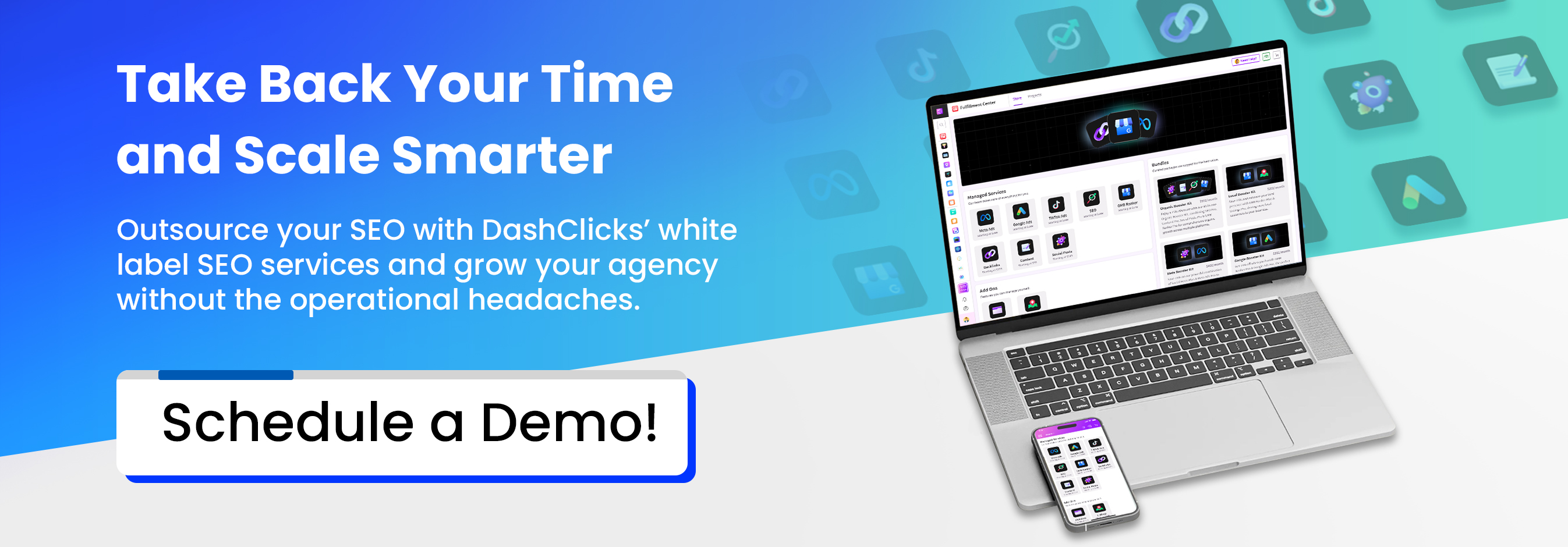

Seasonal Surge? How White Label Facebook Ads Teams Handle Holiday Promotions
Holiday shopping seasons represent both the biggest opportunity and the highest risk for digital marketers. When Shopify merchants generated $11.5 billion in sales during Black Friday–Cyber Monday 2024 alone—a 24% jump from the previous year—the message was clear: consumer demand is there, but only brands that execute flawlessly will capture it.
For marketing agencies, holiday campaigns aren't just about running more ads. They require navigating creative fatigue, audience saturation, skyrocketing CPMs, fierce competition across platforms, and unpredictable inventory challenges. Add to that the reality that roughly 50% of US holiday shoppers now start their purchasing before Thanksgiving, and you have campaigns that must run longer, faster, and smarter than ever before.
This is where white label Facebook advertising teams become essential. Rather than scrambling to hire temporary staff or burning out your existing team, partnering with a specialist fulfillment provider gives you the capacity, playbooks, and systems to turn seasonal chaos into repeatable profit.
Why Holiday Promotions on Facebook Are a Different Beast?
Running Facebook ads during the holidays isn't the same as managing campaigns during the rest of the year. Several unique challenges emerge:
- Creative Decay Happens Faster: During peak shopping windows, users see exponentially more ads. Your creative that performed well in September can burn out in days during November.
- Audience Saturation Accelerates: With every brand competing for the same eyeballs, frequency climbs quickly and engagement drops.
- CPCs and CPMs Spike: Meta's auction system means that as competition intensifies, your cost per click and cost per thousand impressions can double or triple overnight.
- Multi-Platform Competition: Shoppers bounce between Facebook, Instagram, TikTok, Google, and Amazon. You're not just competing with other Facebook advertisers—you're competing with every platform vying for holiday budgets.
- Inventory and Fulfillment Volatility: A hot-selling product can go out of stock mid-campaign, leaving you with ads promoting items you can't deliver.
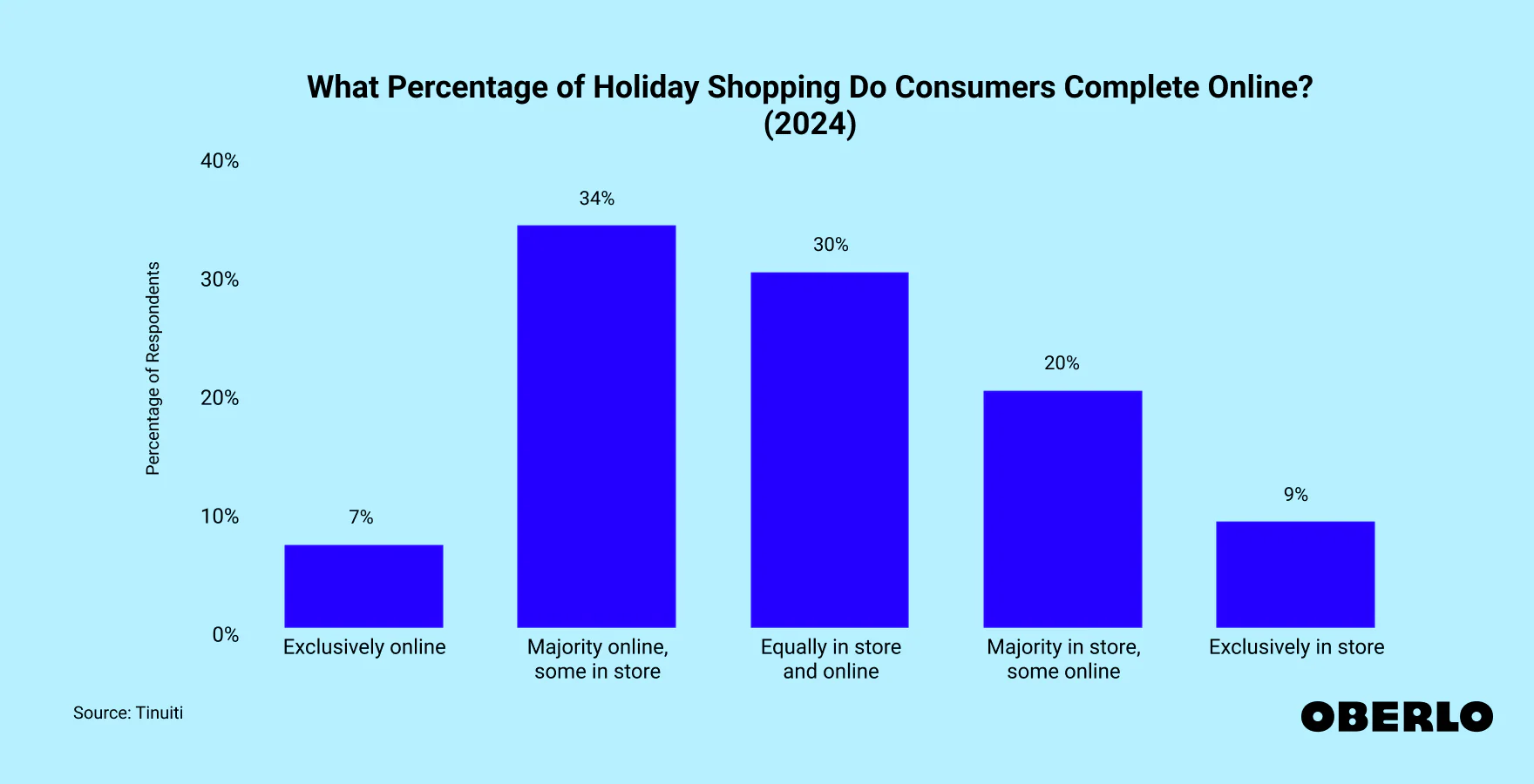
Image Source: Oberlo
The compressed holiday timeline means mistakes are costly and opportunities evaporate fast. Agencies that rely solely on internal teams often find themselves overwhelmed, while those partnering with a Facebook ads services provider can scale smoothly and maintain quality under pressure.
The Pain Points Agencies Face During Seasonal Surges
Let's be honest: most agencies aren't built to handle the operational intensity of holiday campaigns. Here are the common breaking points:
- Capacity Crunch: Your account managers, creative team, and QA staff are already stretched thin. Adding Black Friday campaigns on top of regular client work creates bottlenecks.
- Tactical Knowledge Gaps: Advanced holiday strategies—like orchestrating catalog promotions, leveraging Advantage+ shopping campaigns, or managing campaign budget optimization at scale—require specialized expertise many teams simply don't have.
- Account Volatility and Policy Risks: Rapid creative testing and frequent ad launches increase the risk of policy violations and ad disapprovals. During peak season, a single account suspension can be devastating.
- Reporting Complexity: Holiday customer journeys are rarely linear. Shoppers might see an ad in October, click in November, and convert in December. Multi-touch attribution models and clean reporting become critical—and complicated.
- Budget Mismanagement: Many brands shift budgets earlier in the season, leading to last-minute scrambles and inflated CPMs. Agencies without deep experience in pacing and allocation often overspend without delivering proportional results.
For agencies trying to manage this internally, the result is often missed opportunities, burned-out staff, and unhappy clients. White label Facebook ads services solve these problems by providing instant operational scale, proven systems, and specialist knowledge.
Why White-Label Facebook Ads Teams Are Essential for Holiday Success?
Here's what makes white label Facebook advertising partnerships so valuable during seasonal surges:
- Operational Scale Without Hiring: Instead of recruiting temporary staff or overloading your team, you gain immediate access to dedicated execution capacity. White label teams handle creative production, catalog management, optimization cycles, and quality assurance—allowing your internal team to focus on strategy and client relationships.
- Holiday-Season Playbooks: Top white label providers bring proven frameworks: pre-holiday awareness campaigns, mid-funnel offer promotions, and last-minute urgency creative sequences. They've run hundreds of holiday campaigns and know what works.
- Creative Factories and Modular Assets: Rather than creating every ad from scratch, white label teams use templated systems: GIF overlays, 15–30 second video formats, UGC clips, and dynamic copy variants optimized for different sale windows. This speeds up production and keeps the creative fresh.
- Advanced Bidding and Budget Orchestration: Scaling holiday campaigns requires more than increasing budgets. White label teams use sophisticated frameworks: vertical and horizontal scaling strategies, budget pacing algorithms, bid cap management, and portfolio-level optimization to protect ROAS even as costs fluctuate.
- Compliance and Account Safety: Rapid creative testing during promotions increases the risk of policy violations. White label teams conduct proactive policy reviews, maintain backup creative assets, and manage Meta relationships to expedite appeals and minimize downtime.
- Network Effects: The best white label Facebook ads providers manage campaigns across dozens or hundreds of clients. They reuse learnings, iterate faster, and deploy proven winning templates across accounts—giving you a competitive edge.

Partnering with a white label team transforms holiday volatility into a repeatable, scalable, and sellable service offering. Instead of dreading Q4, you can confidently take on more clients and deliver consistent results.
Further Reading: Scale Your Agency: Why You Need White Label Facebook Ads
Pre-Holiday Readiness: Audit and Playbook
Preparation separates winners from everyone else. Here's a practical checklist to ensure your campaigns—and your white label partner—are ready:
- Ad Account Hygiene Audit: Verify pixel health, event mapping accuracy, domain verification, catalog completeness, and Conversion API setup. Address any gaps now to avoid mid-campaign disruptions.
- Inventory and Fulfillment Sync: Connect promotional creative to stock thresholds. Use automated feed rules to pause ads for out-of-stock SKUs instantly.
- Creative Readiness: Build modular creative packs organized by lifecycle stage—teaser content, launch promotions, scarcity messaging, and post-sale follow-ups.
- Audience Readiness: Seed audiences early. Prepare lookalikes from pre-holiday purchasers and segment "early shoppers" for targeted messaging.
- Budget Runway and Staging: Plan gradual ramps with contingency buffers. Brands that stage budgets earlier reduce peak CPM volatility and avoid last-minute overspending.
Getting these fundamentals right before the holiday rush begins gives you a massive operational advantage and ensures your white label partner can execute smoothly.

Image Source: Search Engine Journal
Creative and Messaging Systems for Holiday Ads
Creative fatigue is the silent killer of holiday campaigns. Combat it with systems, not one-off solutions:
- Modular Creative System: Start with a base video or image and create overlay frames for discounts, urgency countdowns, and social proof. Swap overlays rather than producing entirely new ads—this reduces learning phase disruption.
- UGC and Influencer Clips as Dynamic Assets: User-generated content combats promotional fatigue. Rotate UGC clips every 3–5 days to keep ads feeling fresh and authentic.
- Experimentation Catalog: A/B test hero images versus UGC, value-proposition leads versus scarcity leads, and 3-second hook variations. Small creative tweaks can yield significant performance gains.
- Localization and Micro-Segmentation: Tailor promos by region—highlight tax holidays, local shipping cutoffs, or regional inventory availability.
- Creative Sequencing: Deploy a phased approach—days 0–3 teaser messaging, days 4–10 price promotions, final 72 hours urgency creative. Each phase should have different CTAs and messaging angles.
White label teams excel at managing these creative systems at scale, ensuring your campaigns stay fresh and effective throughout the entire holiday window.
Audience and Data Strategies: Finding Buyers at Scale
Smart audience targeting is what separates mediocre campaigns from exceptional ones:
- Early-Shopper Segmentation: Identify shoppers likely to purchase early using behavioral signals—past Black Friday purchases, October browsing activity, and high-intent engagement patterns.
- Seasonal Lookalikes: Build lookalike audiences from last year's holiday purchasers, then refine them with current-season engagement data for maximum relevance.
- Dynamic Retargeting Cadence: Vary recency windows during the holiday—1–3 days, 4–7 days, 8–21 days—with increasingly urgent creative for each segment.
- Cross-Platform Data Stitching: Pass holiday conversion events into your CRM and use those audiences to create Facebook exclusion lists, reducing wasted spend on users who already converted.
- Audience Saturation Monitoring: Set automated alerts for when frequency climbs and CTR drops. Spin down saturated audiences and refresh early to maintain performance.
White label Facebook ads specialists use advanced audience segmentation strategies like these to maximize efficiency and ROAS during high-competition windows.
Bidding, Budgeting, and Scaling Playbooks
Effective budget management during the holidays requires discipline and expertise:
- Horizontal Scaling Preference: Scale by adding more ad sets and creative combinations rather than dumping all the budget into one winner. This avoids learning phase collapse and maintains stability.
- Staged Budget Ramps: Increase budgets by 10–25% daily with performance checkpoints. Avoid sudden 2x jumps that trigger algorithm instability.
- Portfolio-Level Bidding: Manage budgets across multiple campaigns rather than relying on single-campaign Campaign Budget Optimization (CBO). This provides greater control during volatile periods.
- ROAS Bands and Threshold Controls: Set automated rules to pause underperformers and reallocate budget to mid-funnel or higher-intent campaigns in real time.
- Use of Advantage+ and Automated Placements: Leverage Meta's automation tools, but with guardrails—monitor for creative mismatches and apply manual overrides where needed.
Meta ad spend increased significantly year-over-year during Q4 2024, making early budget planning and disciplined scaling essential. White label teams bring the frameworks and experience to navigate these complexities confidently.
Catalog and Commerce Tactics: Promotions Without Breaking the Pixel
Holiday promotions require tight coordination between your ads and your product feed:
- Feed Management: Tag sale SKUs, apply sale price rules, and use availability fields to auto-suppress ads for out-of-stock products.
- Value Stack Creatives: Show discount + savings + delivery deadline in the same frame to accelerate purchase decisions.
- Dynamic Overlays on Product Creatives: Inject countdowns and stock-level indicators into ads using feed rules for added urgency.
- Measurement Hygiene: Ensure purchase events match CRM order IDs for clean attribution during heavy promotional windows.
These tactics prevent common pitfalls—like promoting out-of-stock items or confusing customers with inconsistent pricing—that can derail otherwise strong campaigns.
Compliance and Account Safety During High-Volume Periods
Policy violations during peak season can be catastrophic. Protect your accounts with proactive measures:
- Pre-Promotion Policy Review: Flag potentially problematic claims, terms, and landing page mismatches before launching mass campaigns.
- Backup Creative and Account Hygiene Plan: Always have compliant fallback ads ready to swap in instantly if the primary creative gets flagged.
- Scale-Safe Testing: Stagger creative refreshes so not all ads enter the learning phase simultaneously, reducing risk and maintaining stability.
- Rapid Appeals and Escalation Pathways: White label teams often manage Meta relationships and can escalate disapprovals faster than individual agencies.
These safeguards ensure your campaigns stay live and performing, even during high-volume promotional periods.
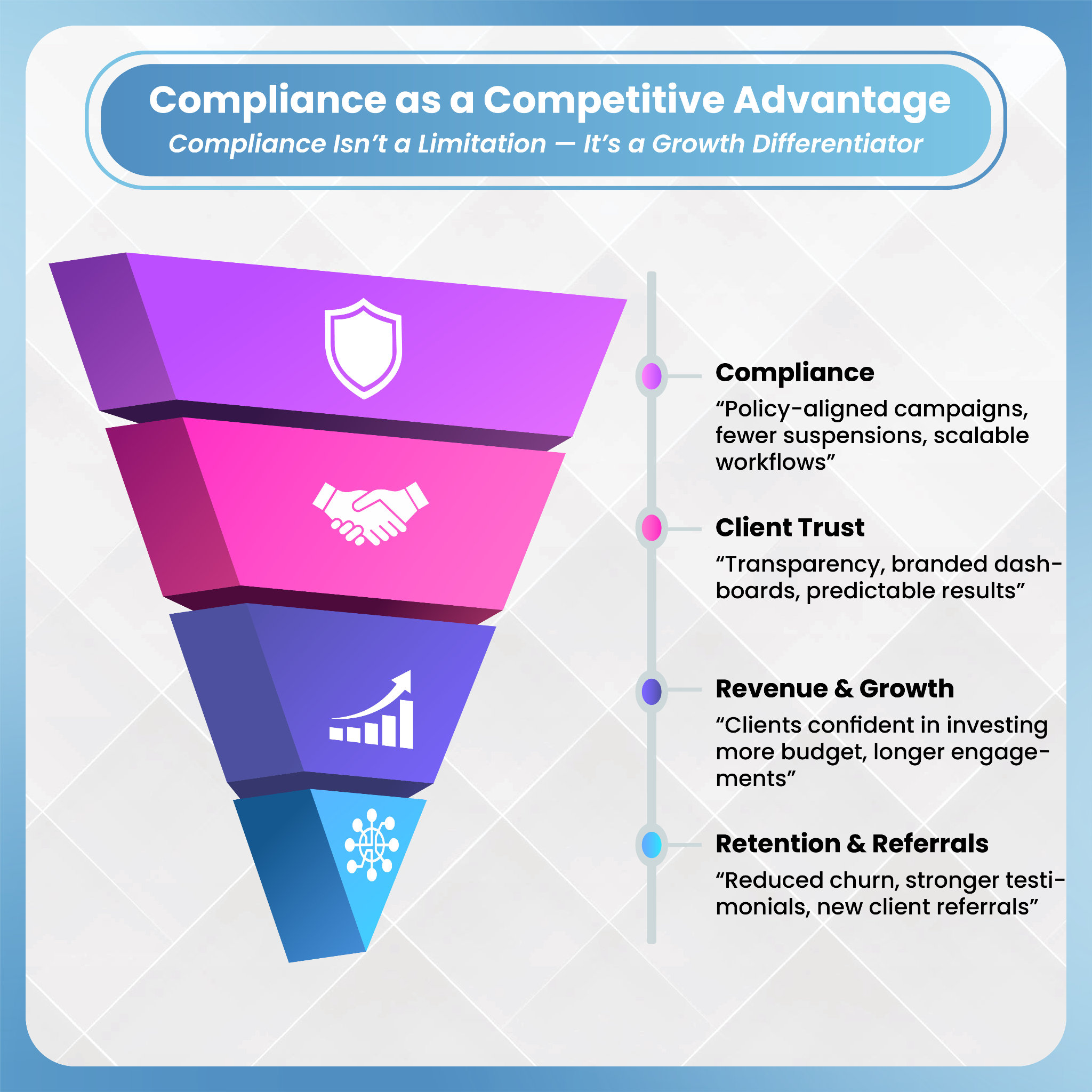
Measurement, Attribution, and Post-Sale Value
Accurate measurement is critical for understanding true campaign performance:
- Cross-Channel Attribution: Use time-decay or multi-touch attribution models to credit Facebook correctly within complex holiday funnels.
- Post-Purchase Retargeting: Convert one-time buyers into repeat customers with upsells, bundles, warranty offers, and post-holiday promotions.
- LTV Tracking for Holiday Cohorts: Measure cohort performance—purchase frequency, return rate, and lifetime value—to justify holiday spend beyond immediate ROAS.
- ROAS vs. Profit Attribution: Track margin after discounts and shipping costs to avoid vanity wins that don't contribute to actual profitability.
With Shopify merchants driving billions in holiday sales, measuring profitability—not just revenue—is essential for long-term success.
Post-Holiday Playbook: Retain and Monetize Holiday Buyers
The holiday season doesn't end on December 26th. Smart marketers extend the value:
- Retention Windows: Launch immediate post-purchase messaging (0–7 days) and repeat incentive campaigns (8–30 days).
- Cross-Sell Bundles: Use holiday purchase behavior to inform complementary product recommendations.
- Build Longer-Term Audiences: Use holiday audiences to create lookalikes and interest groups for ongoing campaigns.
- Run Break-Fix Retrospectives: Capture wins, failures, and playbooks for next year. Continuous improvement is what separates good agencies from great ones.
Post-holiday retention campaigns often deliver the highest ROI because acquisition costs are already sunk. Don't leave this money on the table.
How DashClicks Helps Agencies Win During Holiday Surges?
Managing holiday campaigns internally is stressful, risky, and often unsustainable. DashClicks offers a better way.
With white label Facebook ads services, DashClicks provides instant surge fulfillment—adding creative operations, catalog feed management, and optimization expertise exactly when you need it. Their proven holiday playbooks include prebuilt creative templates, bidding ramp strategies, and emergency response workflows designed specifically for high-pressure promotional windows.
DashClicks also provides white-labeled dashboards for real-time reporting, so your clients see professional, branded performance tracking without you building it from scratch. And with proactive policy escalation lanes and backup creative systems, you get the risk management infrastructure to keep campaigns live and performing, even during peak volatility.
For agencies, partnering with DashClicks converts one-off holiday chaos into repeatable, high-margin productized services. Instead of dreading Q4, you can confidently scale, take on more clients, and deliver consistent results—all while maintaining your brand and client relationships.
Actionable 10-Point Holiday Readiness Checklist
Here's your quick reference guide to ensure you're prepared:
- Pixel & CAPI Health: Test end-to-end tracking and fix any gaps.
- Catalog Tags for Sale & Stock States: Ensure your feed reflects real-time inventory and pricing.
- Creative Modular Packs: Build teaser → sale → urgency → post-sale creative sequences.
- Audience Seeds + Seasonal Lookalikes: Prepare high-intent audiences in advance.
- Budget Ramp Plan with Contingency: Stage increases and reserve buffers for unexpected spikes.
- Automated Feed Rules for OOS Suppression: Prevent promoting unavailable products.
- Policy Pre-Check & Backup Assets: Review compliance and prepare fallback creative.
- Attribution Model Set: Use time-decay or multi-touch attribution for accurate reporting.
- Reporting Dashboard + KPI Baseline: Establish benchmarks before the surge begins.
- Retention Flows for Post-Purchase Monetization: Plan upsell and cross-sell sequences.
Use this checklist to audit your readiness and identify gaps before the holiday rush begins.
Ready to Scale Your Holiday Campaigns?
Holiday surges reward preparedness and specialist execution. White label Facebook ads teams give agencies the operational muscle, proven playbooks, and risk management safeguards to scale profitably and keep clients happy.
Whether you're managing campaigns for your own business or reselling white label Facebook advertising services to clients, the difference between success and missed opportunities often comes down to systems, capacity, and expertise.
Don't let the next holiday season overwhelm your team. Audit your holiday readiness, run a test campaign, or explore how a white label partnership can convert seasonal surges into long-term growth.
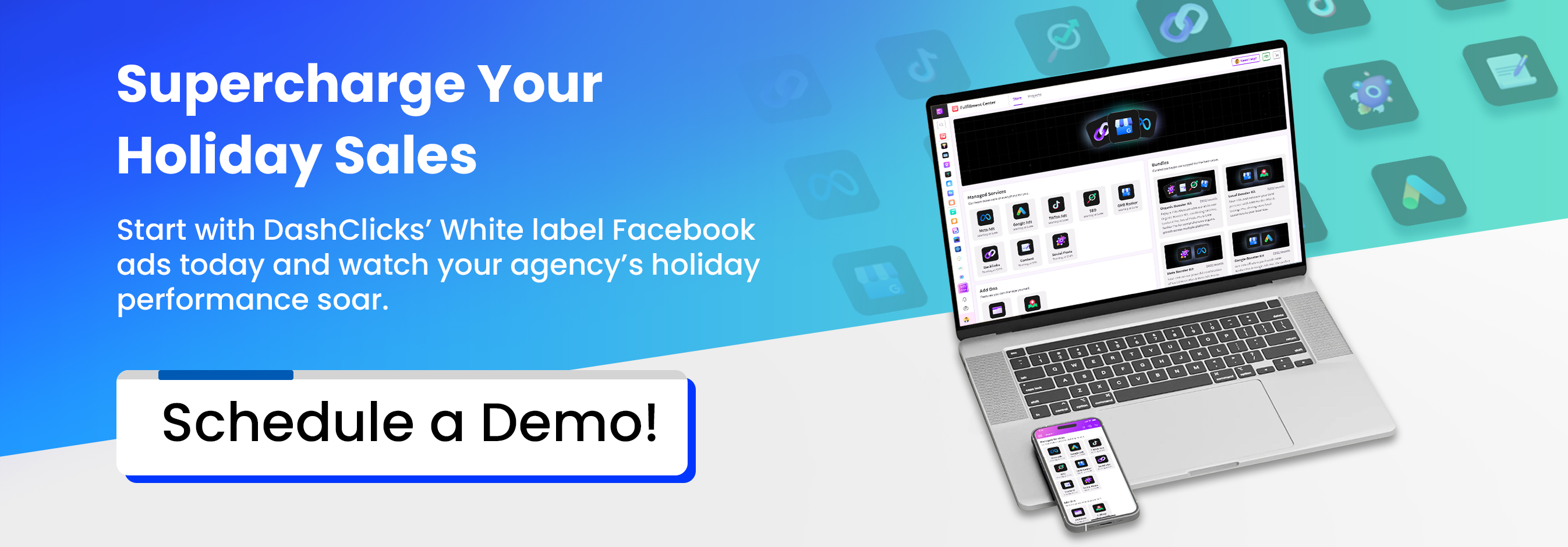
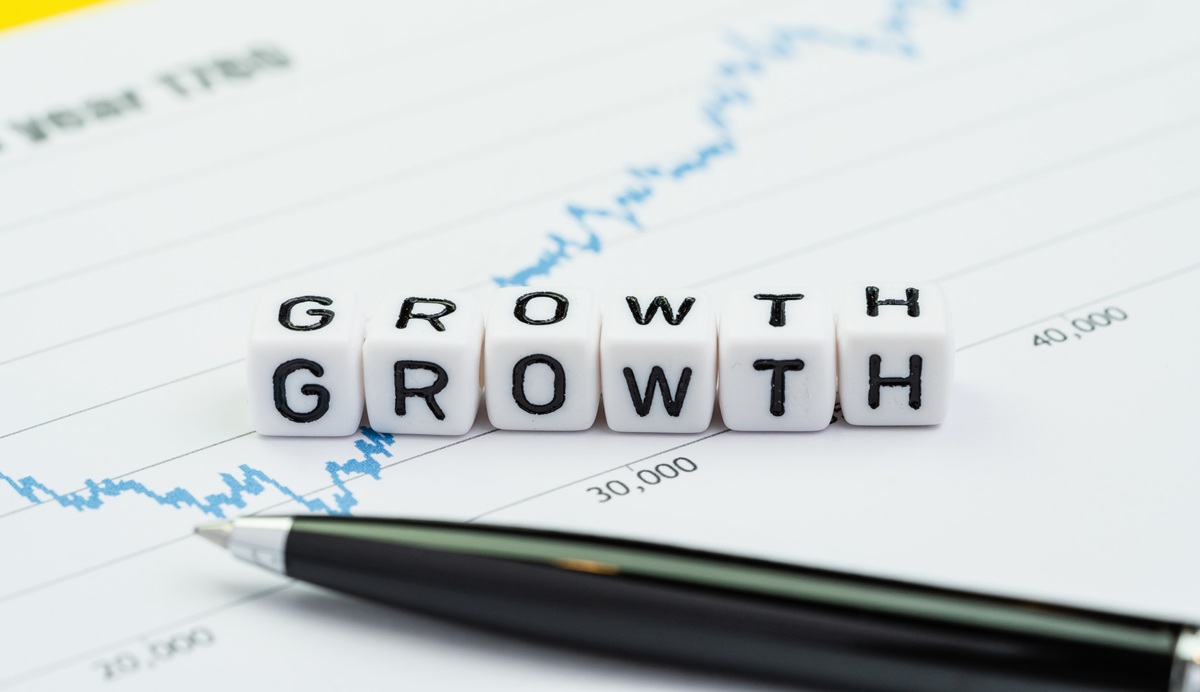
How White Label SEO Will Grow in 2026: Trends and Opportunities for Agencies
You don't have to build everything if you're running or building an agency in 2026. What used to be a "nice-to-have" is now a common way to grow your business. With white label SEO, businesses can hire specialized companies to do their SEO work and then remake and sell those companies' services as their own. That model takes away the stress of hiring, speeds up the time it takes to get new services to market, and keeps the link between the brand and its customers.
So why is white label SEO so popular right now? In short, demand is high, workers are expensive, and technology has made outsourcing safer and easier to track. The significant trends of 2026, the possibilities and risks for agencies, and the next steps you can take this quarter are all detailed below.
Best White Label SEO Trends for 2026
1. Grow Your Business Without Compromising Wages
If an agency wants to quickly add more services, like local SEO, technical audits, link building, and content creation on a large scale, white label SEO partners let them do it without hiring expensive experts. That's why a lot of agencies are sending more work to other companies this year.
2. Superior Dashboards and Reseller Platforms
These days, white label platforms come with branded client dashboards, data portals, and API links that make the work look like it was created by the agency. With this set of tools, handoffs are easy and contact with clients is clear. CRM enrichment tools follow a similar principle—helping teams automate client data syncing and maintain consistent visibility across every integrated workflow.
Similarly, agencies scaling operations can benefit from DevOps automation tools. These systems help unify backend workflows, automate deployments, and manage multiple client-facing services seamlessly — ensuring uptime and consistency as agencies expand their white label SEO offerings.
3. It Wins by Specializing
Niche white label SEO partners, like those that do local technical SEO, ecommerce moves, or content entity building for businesses, have been chosen by agencies instead of broad outsourcing companies. Specialized companies give better returns and are easier to sell.
4. SLAs Based on Results and Transparency
Buyers want results that can be measured, not bills for tasks. Top white label SEO providers now offer outputs with SLAs that include rank milestones, traffic goals, or conversion lifts, along with clear reports guided by AI sales forecasting to set realistic targets. This change lessens the "black box" fear that used to hold back adoption.
5. AI and Human Service Together
Generative AI is used for first drafts, audits, and reports, often via a sales AI agent that accelerates research and QA. Senior planners are in charge of quality control and link outreach. This combination model increases output while maintaining quality.
What Makes White Label SEO a Golden Opportunity for Agencies?
- Quickly Add More Service Options: You don't have to hire new people to add SEO packages like local, technical, content, and link building. That lets you cross-sell to people you already have and bring in mid-market customers who want full-service digital.
- Get Small Businesses to Buy More: SMBs want low-cost SEO plans that they can count on. White label SEO lets you make standard, profit-friendly packages that you can send to hundreds of clients. To increase conversions, agencies can use sales funnel optimization techniques that guide potential customers step-by-step from discovering your service to finally making a purchase. Many businesses that outsource 40–60% of their delivery say they grow faster and make more money.
- Provide Vertical Solutions: You can offer special eCommerce SEO services to your business by working with niche white label vendors. It's easy to price, sell, and show ROI for vertical deals. Agencies can also focus on verticals such as jewelry, helping businesses rank for terms like engagement rings, wedding rings, and diamond rings, while boosting visibility for other key products.
- Develop Premium Managed SEO Tiers: White label SEO partners can help with delivery, but you should still be in charge of client strategy, reports, and relationship management. That keeps your brand's credibility and gives you the chance to sell more.
- As a Value-Add, White Label Tech: With branded dashboards, automatic reports, and SEO scorecards, you can make your business look bigger and brighter without having to pay for custom development. Tools like ZenBusiness Velo help streamline these processes, giving small businesses a professional edge with minimal effort.
ROI Benchmarks: What Agencies Are Actually Earning from White Label SEO?
When agencies weigh white label SEO, the key question is ROI — what’s the actual financial upside?
1. Profit Margins — In-House vs. White Label: Industry surveys show most SEO agencies earn 11–21%+ net margins. Outsourcing delivery cuts hiring, training, and tool costs — often boosting gross margins by 10–20 points. Example: if in-house SEO costs 60% of revenue, shifting to a partner can drop that to 40%, raising profits without adding staff.
2. SEO ROI Multipliers: Your wholesale cost of delivery is reduced via white-label; the real value lies in positioning SEO as a scalable, recurring revenue stream—and showing clients measurable outcomes. Agencies using white label SEO save 40–60% in delivery costs while maintaining these returns.
3. Client Retention & Lifetime Value: Outsourcing improves fulfillment consistency and scalability, leading to higher retention and lower churn. Some providers report 100% client retention across white label portfolios. Longer client lifespans directly lift ROI and agency valuation.
4. Modeling the ROI: Estimate ROI by comparing current in-house costs vs. white label fees and factoring in retention gains. Here’s a simple three-step framework your agency can use to estimate potential ROI:
- Step A: Calculate your current cost of SEO delivery in-house.
- Step B: Estimate the white-label delivered cost.
- Step C: Estimate margin uplift and break-even time.
Example:
- In-house cost per $1 revenue = $0.60 → 40% margin.
- White label cost = $0.40 → 60% margin.
- Extend client retention from 12 → 15 months = +$6,000 revenue per client.
5. Risks & Caveats
ROI depends on quality, scope, and control. Poor fulfillment or unclear SLAs can erase savings. High-performing verticals (B2B, SaaS, Finance) show an ROI of 500–1,300%, but require a longer ramp-up (~9 months).
White label SEO agency transforms SEO from a delivery bottleneck into a scalable profit center — with higher margins, faster growth, and stronger retention, as long as agencies keep strategy and client relationships in-house.

What Are the Risks and How to Deal With Them?
- Problems with quality control. Not every service company is the same. Don't make choices based only on price; look at methods, case studies, and references. Before going live with everything, try a small test run.
- Clients expect quality to be steady. Take care of the planning and reporting, but keep the client-facing work. Outsource the performance, but not the contact with clients.
- Avoid assigning the entire delivery responsibility to a single collaborator. Keep two providers that have been checked out or keep a small team of people in-house for significant positions.
- Check that the service providers' systems are safe and that they sign clear NDAs and data-processing agreements.
How to Choose the Best White Label SEO Partner?
Picking the right white label SEO partner can make or break the success of your business. First, look for proof, not promises. Ask for real case studies of performance in your area and access to sample reports to see how they work. Next, give it a try with an explicit service level agreement (SLA) and results that can be tracked. This lets you see how reliable they are before making a long-term commitment.
Check out their tools and feedback methods as well. To keep things running smoothly for your clients, you need branded client websites and automatic reports. Don't forget about the ways people communicate; know how tickets, escalations, and monthly reviews work to avoid confusion in the future.
At last, evaluate cultural compatibility. When it comes to working together efficiently, things like being quick, having the same language, and being able to work with people in different time zones often make a bigger difference than people think.

Quick Wins You Can Start
- Test one white label SEO package for three months with a current client and keep track of MQLs and traffic growth.
- Make a branded report form so that all work that is hired looks like it was done by you.
- Make a form for an FAQ and an NDA to speed up the process of hiring partners.
- Train your account team to be the strategy layer. They should be in charge of talking to clients, and partners should be in charge of doing the work.
How DashClicks’ White Label SEO Helps Agencies Scale Smarter?
As agencies prepare for tighter budgets, smarter automation, and higher client expectations in 2026, DashClicks provides the infrastructure to scale SEO delivery — without adding headcount or losing control.
- Full-Service SEO, 100% Under Your Brand: With DashClicks’ white label SEO services, agencies can offer local SEO, technical audits, link building, and content creation — all executed by seasoned experts but presented entirely under your agency’s branding. It’s a turnkey model that helps you expand service lines overnight.
- Branded Dashboards and Automated Reports: DashClicks’ platform includes real-time, branded dashboards and automated client reporting. These tools make outsourcing invisible to clients while giving your team total visibility into rankings, backlinks, and analytics — no data gaps, no manual updates.
- Transparent SLAs and Measurable Results: Every campaign runs on clearly defined deliverables and measurable KPIs like rank improvements, traffic lifts, and conversions. This transparency removes the “black box” fear many agencies face with outsourcing.
- AI-Driven Efficiency Meets Human Expertise: DashClicks combines AI-powered auditing, keyword tracking, and reporting with a dedicated human fulfillment team that ensures strategy alignment and quality. The result — faster turnaround, higher accuracy, and better ROI for every client.
- Better Margins and Happier Clients: By removing the overhead of hiring and training, agencies keep profit margins high while maintaining delivery consistency. The branded client experience keeps retention strong, turning SEO into a predictable growth engine.
In short: DashClicks gives agencies the speed, scale, and sophistication of an enterprise SEO team — without building one from scratch.
Wrapping It Up
If an agency wants to grow without hiring more people, white label SEO is a practical and tried-and-true way to do it in 2026. With strict partner selection, tight SLAs, and keeping client control, it's a win-win situation for everyone: faster product growth for agencies and regular, measurable results for clients. Innovative companies will use white label providers as muscle, not brains. They will keep the brand and strategy, and let experts do the hard work.


The Hidden ROI of White Label PPC: Turning Unused Capacity into Billable Growth
Many agencies struggle with a problem they don't even recognize. While their teams work hard to serve existing clients, valuable resources sit idle, waiting for the right opportunity. This unused capacity represents more than missed potential—it's silent revenue decay happening right under their noses.
The solution isn't always hiring more staff or taking on bigger clients. Sometimes, the smartest move is leveraging what you already have through strategic partnerships. White label PPC services offer a unique opportunity to transform idle resources into profitable growth engines.
This comprehensive guide explores how agencies can unlock hidden ROI by converting unused capacity into billable hours through white label PPC partnerships. We'll examine the real costs of underutilized resources and show you practical strategies to maximize your agency's earning potential without expanding your overhead.
The Real Cost of Unused Capacity in PPC Agencies
Most agencies operate with significant slack in their systems without realizing the financial impact. This hidden inefficiency costs more than just productivity—it directly affects your bottom line.
1. Hidden Slack in Operations
Agency operations often contain invisible gaps that drain profitability. Account managers may have capacity for additional campaigns, ad credits might expire unused, and budgets could be allocated more efficiently across client portfolios.
According to a 2024 HubSpot Agency Operations Report, nearly 38% of agency hours go unbilled due to process inefficiencies and uneven workloads. This staggering figure represents thousands of dollars in lost revenue for the average agency.
2. Revenue Leakage
Every hour of unused PPC management capacity equals lost billable time. Consider this scenario: if your agency currently manages Google Ads for 10 clients but has the infrastructure to handle 15 accounts effectively, those missing 5 campaigns represent pure opportunity loss.
The math is simple yet sobering. If each additional client brings $2,000 monthly in retainer fees, unused capacity for 5 clients means $10,000 in monthly revenue sitting on the table. Over a year, that's $120,000 in missed opportunities.
3. The Capacity-Profitability Mismatch
Many agencies scale their staffing around large retainer clients, which often leaves smaller accounts underserved. This creates a dangerous cycle where valuable team members work below their potential while profitable opportunities slip away.
White label PPC agencies bridge this gap efficiently by providing expert management for overflow work, allowing your team to focus on high-value strategic activities while ensuring no revenue opportunity goes untapped.
Understanding Hidden ROI: Beyond the Obvious Cost Savings
When agencies evaluate the return on investment (ROI) of white label PPC services, the instinct is often to focus on immediate cost savings—reducing in-house staff or avoiding overhead expenses. While these savings are real, they represent only the tip of the iceberg. The true ROI of white label PPC extends far beyond cost reduction, delivering measurable gains in revenue recovery, operational efficiency, and client lifetime value.
1. Client Lifetime Value (CLV) ROI
Perhaps the most significant hidden ROI lies in its impact on client retention and lifetime value. Consistent, high-quality service across multiple advertising platforms creates better performance results, which clients notice and reward with long-term loyalty.
Agencies offering comprehensive PPC solutions across Google, Meta, LinkedIn, and other platforms provide a seamless experience that strengthens client trust. When campaigns consistently deliver results, clients are more likely to:
- Increase their monthly spend across platforms.
- Expand their service adoption to include additional marketing offerings.
- Remain with the agency longer, reducing churn.
Supporting this, CallRail’s 2024 Agency Benchmark Study found that agencies offering cross-platform PPC services saw a 32% increase in average client lifespan. This extended relationship directly boosts lifetime value per client, translating into more predictable revenue streams and higher overall profitability.
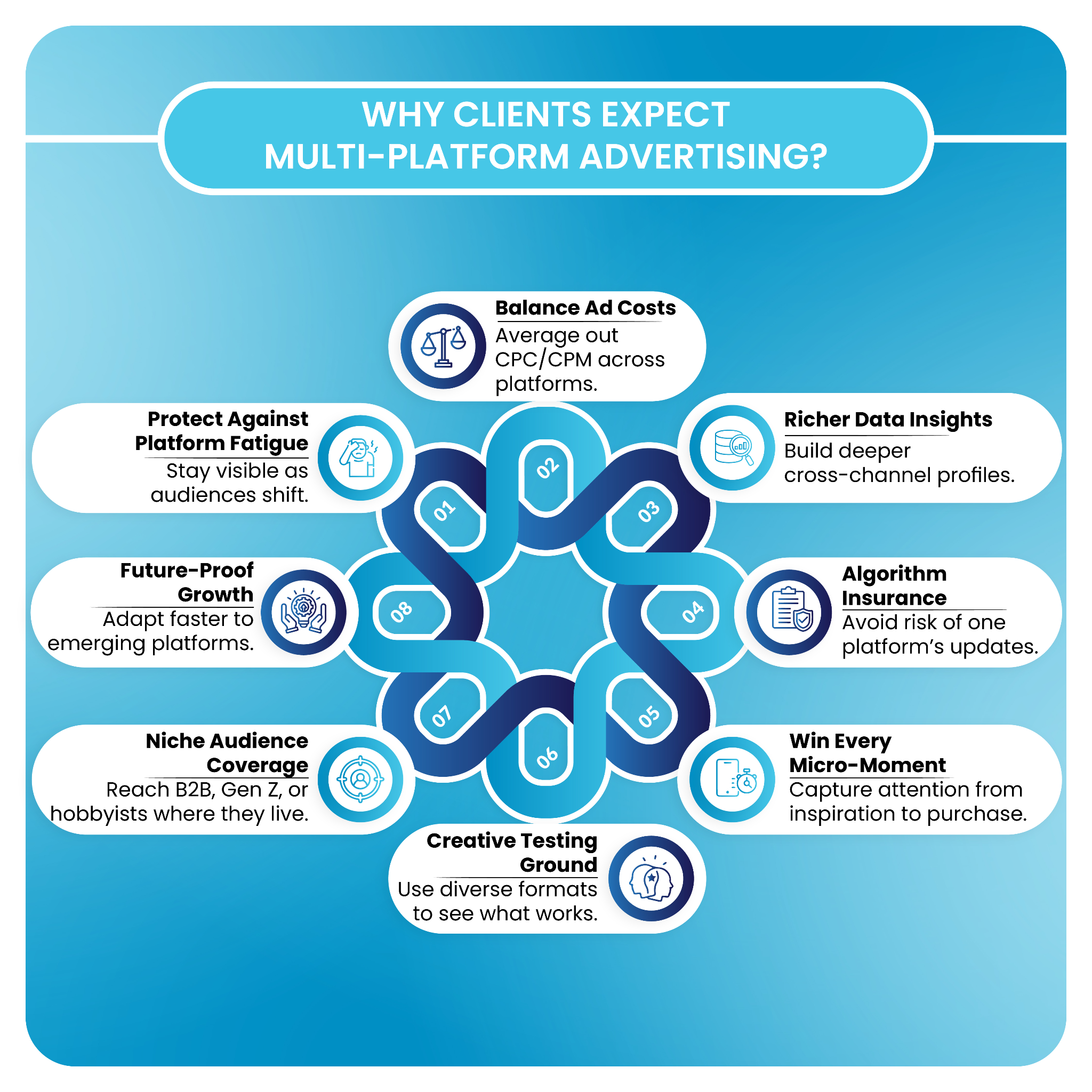
2. ROI as Revenue Recovery
One of the most overlooked benefits of white label PPC is its role in capturing revenue that might otherwise be lost. Instead of thinking of white label services as “outsourcing,” forward-thinking agencies view them as a tool for revenue recovery.
This mindset shift changes how you assess value. With white label PPC, agencies can take on more client work without the cost and commitment of hiring full-time staff. Overflow projects, seasonal campaigns, or specialized ad platforms—tasks that might have been declined or delayed due to capacity constraints—can now be executed efficiently. The result is additional profit on work that might otherwise have been lost to competitors.
For example, an agency with limited internal PPC capacity could pass on a LinkedIn or programmatic campaign, only to see a competitor secure the client. With white label support, that revenue stays in-house, effectively converting previously “unreachable” business into tangible profit.
3. Operational ROI
White label PPC services also deliver operational benefits that compound over time, making your agency more agile and efficient:
- Improved Campaign Velocity: White label partners accelerate campaign launch timelines, allowing clients to see results faster. Quicker execution often leads to higher client satisfaction and repeat business.
- Enhanced Expertise Access: Agencies gain access to specialists experienced in various platforms and industries without the cost of hiring or training in-house teams.
- Reduced Training Costs: No need to develop internal experts for every ad platform, saving both time and money.
Data support these advantages. According to WordStream’s 2024 Agency Data, agencies leveraging hybrid white label PPC teams report 23–27% faster campaign launch times compared to agencies relying solely on in-house staff. This operational efficiency not only improves client outcomes but also frees internal resources to focus on strategy, client relations, and scaling other services.
The Big Picture
White label PPC ROI isn’t just about cutting costs; it’s about unlocking revenue you might otherwise miss, improving operational efficiency, and extending client relationships. Agencies that recognize these hidden returns position themselves to grow faster, retain clients longer, and maximize profit margins—all while maintaining flexibility and avoiding the constraints of a fully in-house team.
How White Label PPC Converts Slack into Billable Growth?
The transformation from unused capacity to profitable growth happens through several key mechanisms that smart agencies leverage systematically.
1. Instant Utilization Without Hiring
White label partnerships enable agencies to onboard additional campaigns across Google Ads, Meta, LinkedIn, and other platforms with zero lag time. A 10-person team can effectively manage twice its normal workload by leveraging backend support.
This arrangement transforms every underutilized strategist hour into client-facing deliverable time. Your team focuses on strategy, client communication, and business development while white label partners handle execution and optimization.
2. Expanding Service Mix for Existing Clients
Cross-selling becomes significantly easier when you can confidently offer multi-platform PPC management. Clients appreciate working with one agency that can handle their entire paid advertising portfolio.
Agencies diversifying into 3+ PPC platforms experienced a significant increase in upsell rates within six months. This expansion happens without adding internal complexity or training costs.
3. Dynamic Resource Allocation
Unlike fixed salary costs, white label partnerships allow agencies to scale campaigns up or down based on client demand. This flexibility converts the volatility of client needs into predictable profit margins.
Seasonal businesses, performance-based campaigns, and testing budgets all become profitable opportunities rather than resource allocation challenges.
4. High-Margin Billing Models
Well-structured white label arrangements allow agencies to maintain 40-60% margins on outsourced campaigns while clients receive full-service delivery. This creates win-win scenarios where everyone benefits from the expanded capacity.
For example, a $2,000 client retainer minus $1,200 in white label costs leaves $800 in net gain with zero internal labor investment. These margins often exceed in-house delivery costs when you factor in benefits, training, and overhead expenses.
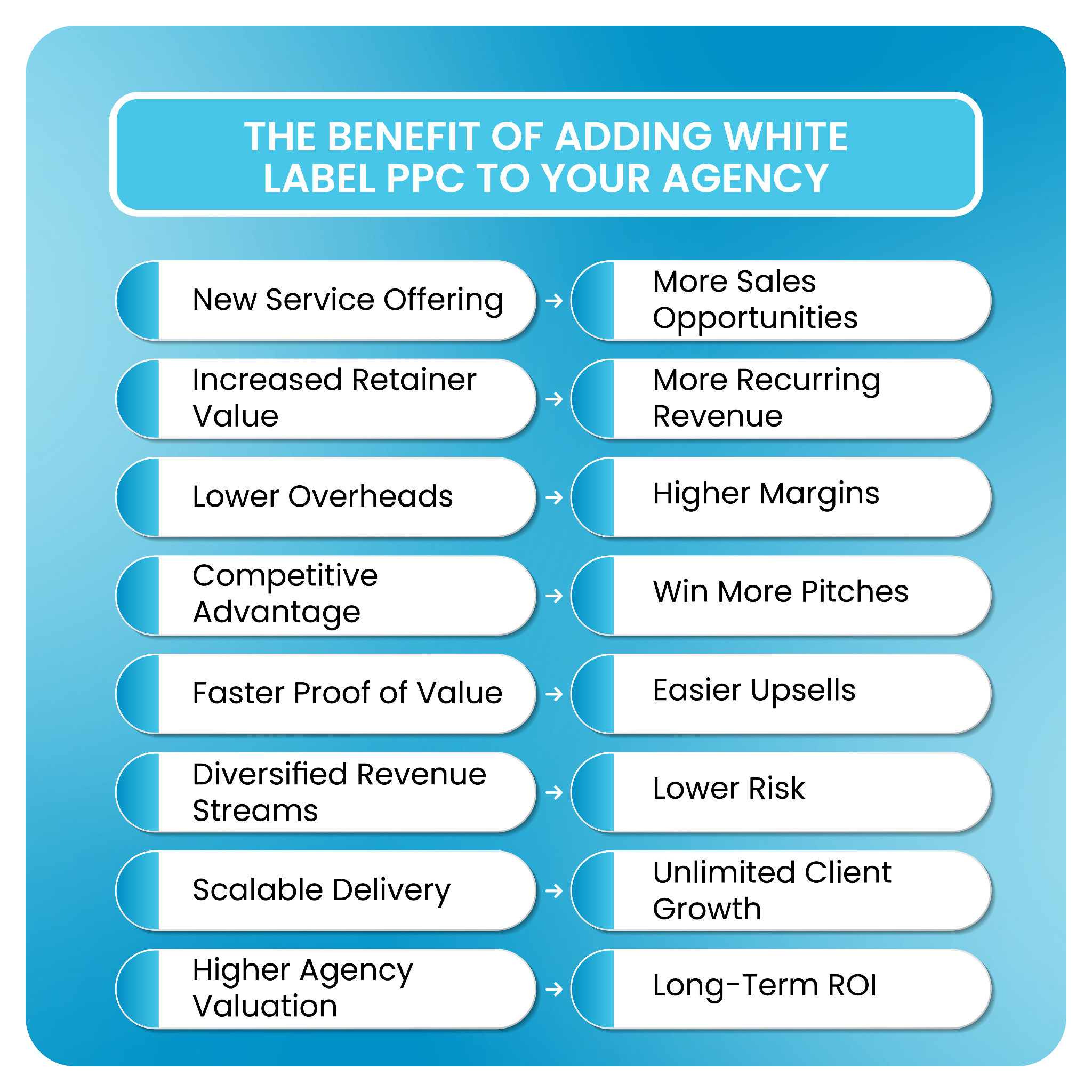
The Compounding Effect: How White Label PPC Enhances Client Retention
Hidden ROI compounds through improved client satisfaction and retention, creating long-term value that far exceeds initial cost savings.
- Consistent Performance Delivery: Clients experience seamless service quality even during agency transitions, staffing changes, or campaign overloads. This consistency builds trust and demonstrates professional reliability.
- Always-On Expertise: White label PPC agency provide specialized knowledge and 24/7 optimization that smaller agencies cannot afford to maintain in-house. Clients benefit from enterprise-level service delivery at a fraction of the cost.
- Proactive Scaling: Rather than declining opportunities outside your core expertise, you can confidently expand service offerings. When clients ask about TikTok ads or YouTube campaigns, you respond with "we have a specialized team ready" instead of "that's not our focus."
According to AdRoll's 2024 Agency Study, agencies leveraging white label PPC partnerships saw 19% higher client retention year-over-year compared to agencies relying solely on internal resources.
Revenue Architecture: Turning Efficiency Gains into Growth Systems
The most profitable agencies don't just use white label PPC services—they systematize them into scalable growth engines.
- Tiered Packaging Model: Smart agencies create integrated PPC packages that combine Google, Meta, and YouTube advertising under unified management. This approach increases billing efficiency while simplifying client decision-making. Clients prefer working with agencies that can manage their entire paid advertising portfolio rather than coordinating between multiple specialists.
- Data Integration Advantage: Unified reporting from white label teams enables agencies to create comprehensive dashboards that show cross-platform performance. This integrated view adds significant perceived value for clients.
- Strategic Expansion: Agencies that successfully cross-sell YouTube Ads to 30% of existing clients typically see ARR increases of 22% without additional internal hires. This growth comes from expanded wallet share rather than new client acquisition costs.
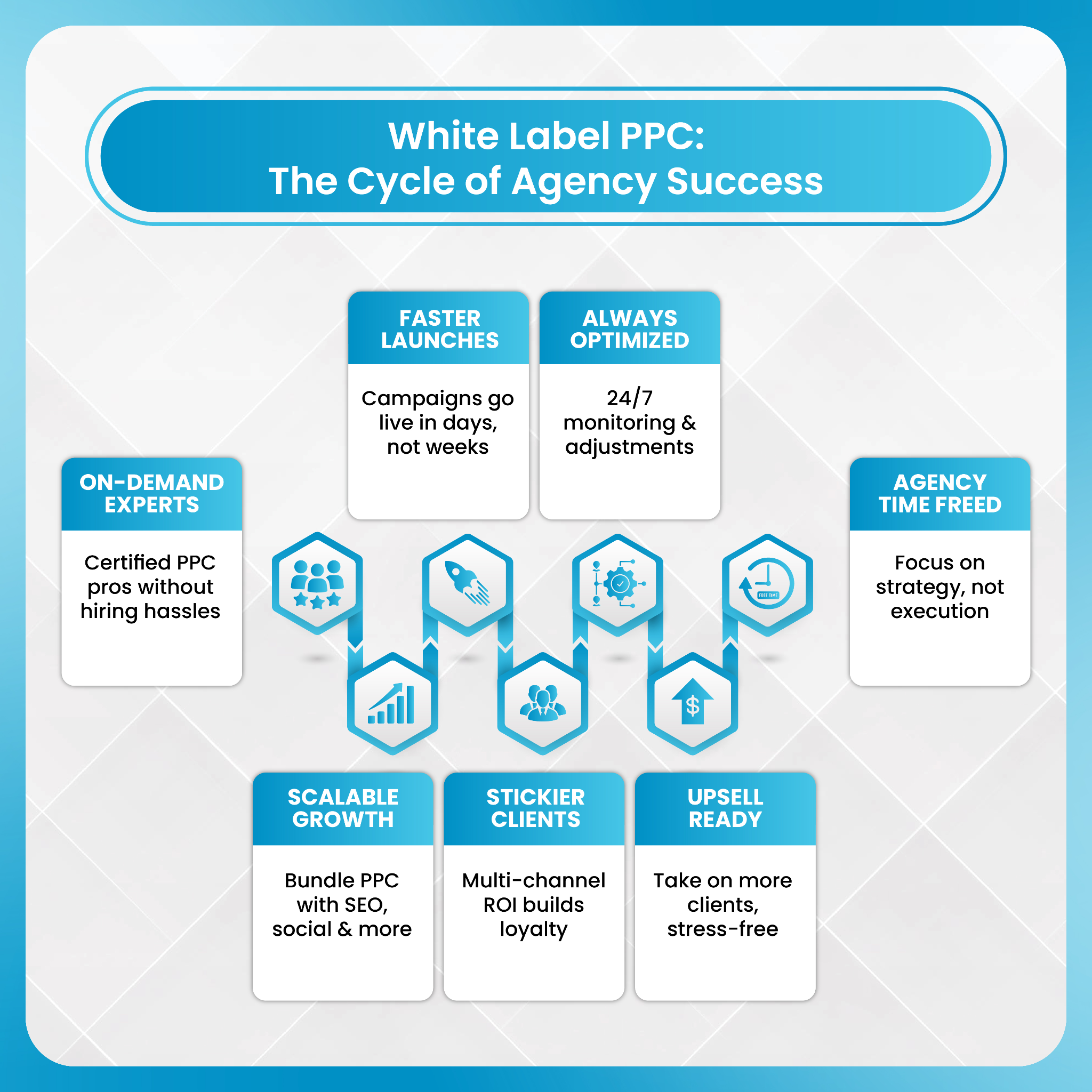
Measuring the Hidden ROI
Making ROI visible requires tracking specific metrics that demonstrate the true value of expanded capacity.
Core Metrics to Track
- Utilization Rate: Percentage of available hours converted to billable work.
- Revenue per FTE: Should increase 20-35% with white label integration.
- Cross-Sell Adoption: Track the percentage of clients using multiple PPC channels.
- Retention Rate: Target 85%+ for agencies with hybrid white label models.
Transparent Reporting
Integrate white label performance data into branded dashboards that clients access directly. This transparency builds trust while demonstrating the value of your expanded service capabilities.
DashClicks: Maximizing Your Hidden ROI Potential
DashClicks transforms unused agency capacity into profitable growth through comprehensive white label PPC services that seamlessly integrate with your existing operations.
Our platform enables agencies to manage multi-platform campaigns across Google Ads, Facebook, TikTok, and LinkedIn without increasing internal headcount. The transparent reporting dashboards and performance tracking tools maintain your brand identity while delivering enterprise-level results.
Agencies using DashClicks' white label solutions typically see immediate improvements in utilization rates and client satisfaction scores. The platform's intuitive interface makes it easy to manage campaigns at scale while maintaining the personal touch your clients expect.
With branded reporting and seamless client communication tools, your team can focus on strategy and relationship management while DashClicks handles the technical execution. This division of labor maximizes both efficiency and profitability.
Future Outlook: The Agency Model Moving Toward Invisible Operations
The next evolution in agency scaling involves "invisible capacity"—a model where growth becomes completely decoupled from internal headcount limitations.
As AI and automation merge with white label PPC systems, agencies will move toward meta-efficiency, where every task, interaction, and optimization opportunity gets monetized. This transformation will separate successful agencies from those stuck in traditional service delivery models.
Agencies that master hidden ROI principles now will be positioned to dominate the performance economy of tomorrow. The combination of strategic oversight, white label execution, and data-driven optimization creates sustainable competitive advantages that compound over time.
Turning Hidden Potential into Profitable Reality
The hidden ROI of white label PPC lies not just in cost savings, but in transforming unused capacity into systematic growth engines. By leveraging specialized partnerships, agencies can serve more clients better while maintaining healthy margins and improving team satisfaction.
The key is recognizing that unutilized capacity isn't a minor inefficiency—it's a major profit leak that compounds over time. White label PPC services provide the solution by converting idle resources into billable growth opportunities.
Smart agencies are already making this transition, turning their unused potential into competitive advantages. The question isn't whether you have hidden capacity—it's whether you'll unlock its value before your competitors do.
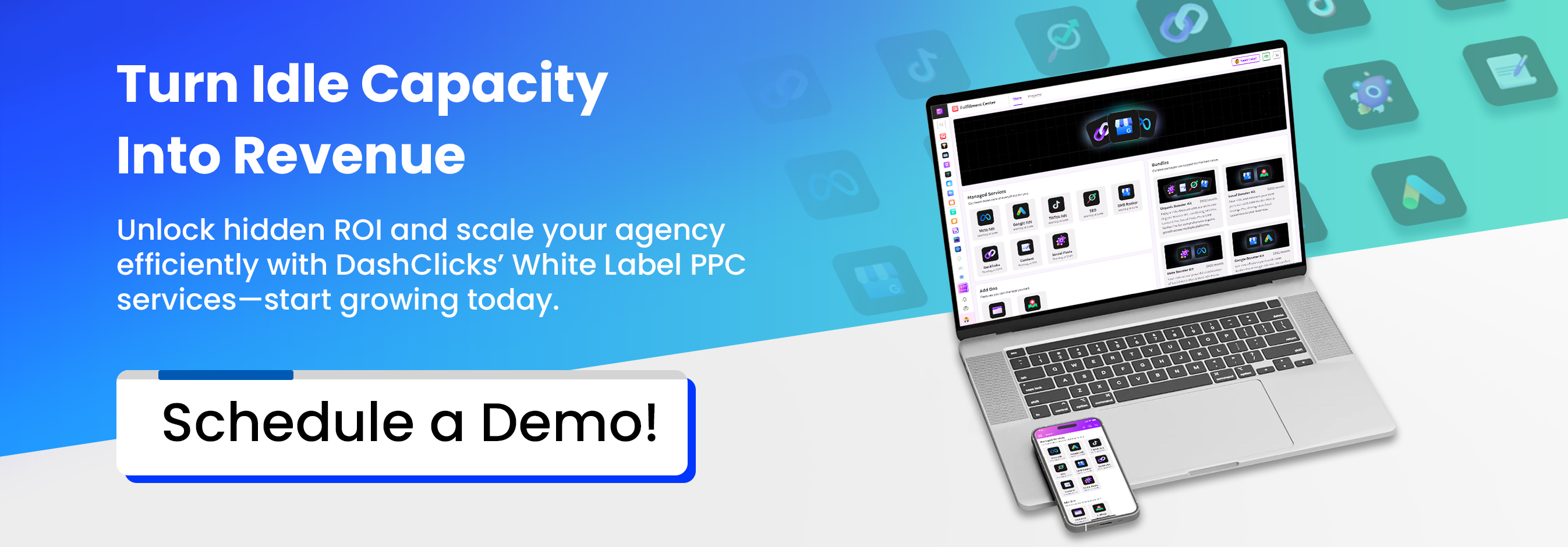

The Role of White Label SEO in Agency Portfolio Diversification
In today's competitive digital landscape, agencies are constantly under pressure to deliver comprehensive results and prove their value. Standing still isn't an option. Clients expect integrated strategies that drive growth across all channels, and if you can't provide them, they'll find someone who can. This is where portfolio diversification becomes not just a growth strategy, but a survival tactic.
However, adding new services isn't as simple as flipping a switch. Expanding in-house capabilities, like building an SEO department from scratch, comes with significant challenges. It involves hefty investments in hiring expert talent, extensive training, and developing new operational workflows. These hurdles can slow down growth and drain resources, making it difficult to keep up with market demands.
This is where white label SEO emerges as a powerful solution. By partnering with a white label SEO agency, you can rapidly expand your service offerings without the associated risks and overhead. It’s a strategic move that allows you to provide expert SEO services under your own brand, instantly diversifying your portfolio and enhancing your competitive edge. In fact, according to HubSpot, agencies offering integrated services see 30–50% higher client retention than their single-service counterparts.
Portfolio Diversification as a Growth Lever
Diversifying your service portfolio is one of the most effective ways to accelerate agency growth. When you add a service like SEO to your existing offerings—such as PPC, social media management, or content marketing—you create a more holistic and powerful marketing engine for your clients. An integrated approach where SEO and PPC work in tandem, for instance, can significantly improve overall campaign performance and ROI.
The benefits of diversification are multi-faceted:
- Access to New Revenue Streams: Instantly offer high-demand SEO services without the cost of hiring additional full-time staff. This allows you to upsell existing clients and attract new ones looking for a full-service agency.
- Strengthened Client Relationships: When you manage more aspects of a client's digital strategy, you become an indispensable partner. Integrated strategies lead to better results, which in turn foster greater trust and loyalty.
- Competitive Differentiation: In a crowded market, being a one-stop shop is a major advantage. While competitors might specialize in a single area, you can offer a complete solution that addresses all of your clients’ digital marketing needs.
Imagine an agency that has traditionally only offered PPC management. By partnering with a white label SEO provider, they can immediately start selling SEO packages to their existing client base. This not only generates new revenue but also positions them as a more strategic, full-service partner capable of driving long-term, sustainable growth.
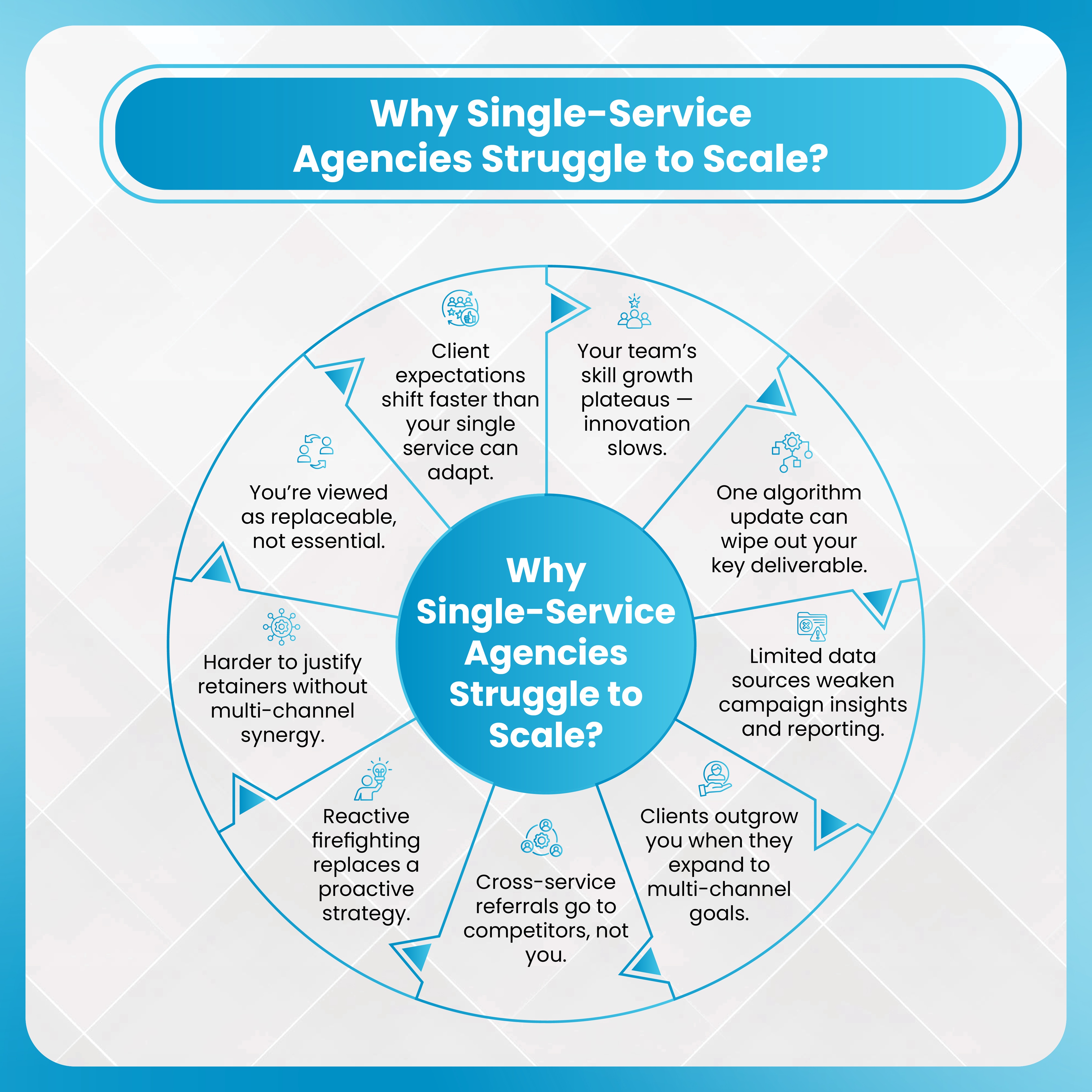
How White Label SEO Services Specifically Enable Diversification?
Partnering with a white label SEO agency isn't just about outsourcing tasks; it's about strategically leveraging external expertise to make your portfolio more versatile and profitable. Here’s how these services enable seamless diversification:
- Instant Access to Expertise: You gain immediate access to a team of seasoned SEO professionals without navigating the steep learning curves and hiring challenges. Your partner delivers high-level strategy and execution from day one.
- Customized Campaign Execution: A great white label partner can tailor SEO strategies to various industries, languages, or geographic locations, allowing you to confidently serve a diverse client base.
- Branded Delivery: All the work is delivered under your brand. From reports to dashboards, everything is customized with your agency's logo, ensuring you maintain a consistent and professional image while the complex fulfillment happens behind the scenes.
- Flexible Resource Allocation: White label partnerships allow you to scale your services up or down based on client demand. This operational flexibility means you can take on more clients without the strain of expanding your internal team.
- Actionable Analytics for Upsells: Reputable white label SEO services providers supply detailed data and insights that you can use to demonstrate value and identify opportunities to cross-sell or upsell additional services.
Expanding Your Agency’s Reach and Retention with White Label SEO
Let's break down the tangible ways white label SEO services can transform your agency’s growth trajectory.
1. Unlocking New Revenue Streams Without Hiring
You can immediately start offering advanced SEO services like technical audits, comprehensive link-building campaigns, and specialized local SEO under your own brand. Many white label SEO partners have proven expertise in niche industries such as legal, healthcare, SaaS, or eCommerce, allowing you to monetize untapped markets without the overhead of training or staffing. For example, by adding local SEO packages to your existing PPC clients in the home services sector, you instantly open up a new, recurring revenue stream.
2. Expanding Into Niche Markets with Confidence
Entering specialized verticals can be risky if you lack proven experience. A white label partner mitigates this risk by providing access to validated workflows and case studies. This allows you to enter niche markets like healthcare or legal SEO with the confidence that you're delivering an effective, compliant strategy. The partner's expertise becomes your own, accelerating your market entry and building client trust from the start.
3. Enhancing Client Retention Through Bundled Offerings
Bundling white label SEO with your existing services is a powerful retention strategy. When clients see the synergistic effect of their PPC, content, and SEO efforts working together, they're more likely to stay with you for the long haul. A good white label provider will offer branded dashboards that clearly showcase measurable results, increasing transparency, and reinforcing your agency's value. Agencies that successfully bundle SEO and PPC, for example, often report higher client stickiness and longer retainer agreements.
4. Scaling Without Operational Bottlenecks
One of the biggest challenges for growing agencies is managing an increasing workload without sacrificing quality. White label SEO services solve this problem by allowing you to handle a larger volume of clients and more complex campaigns through outsourced execution. You can maintain consistent quality and predictable delivery, all without the operational and financial burden of expanding your internal team. This makes scaling not only feasible but also highly efficient.
5. Strategic Leverage for Competitive Differentiation
In a market where many agencies offer similar services, portfolio diversification is a key differentiator. By integrating high-value SEO services, you can position your agency as a full-service digital growth partner. While your competitors are limited to PPC or social media, you can provide a complete solution that meets a wider range of client needs, giving you a distinct competitive advantage.

Measuring the ROI of a Diversified Service Portfolio
Integrating white label SEO into your agency’s service offerings is more than just adding another line on your menu—it’s a strategic move that can unlock significant revenue and client growth. But like any investment, the key to success lies in measuring its return.
A diversified service portfolio isn’t just about having more services; it’s about understanding how each service contributes to your bottom line and your clients’ results. Here’s how to evaluate the impact of adding white label SEO in a meaningful, data-driven way.
1. Client Lifetime Value (CLV)
Client Lifetime Value measures the total revenue a client generates over their relationship with your agency. When you add SEO to your portfolio, you should ask: Are clients staying longer? Are they spending more? A client who originally purchased only PPC services may now engage in long-term SEO contracts, which can significantly increase their CLV. Tracking CLV over time shows whether your expanded offerings are creating deeper, more profitable client relationships.
2. Upsell Rate
Upselling is the most straightforward indicator that your clients recognize the value of your new services. Track how many existing clients adopt SEO alongside their current packages.
For example, if your upsell rate was 10% before introducing SEO, an increase to 25–30% would indicate that clients are finding integrated solutions more valuable than single-service engagements. Upsells not only boost revenue but also strengthen client loyalty by offering them a more comprehensive digital strategy.
Further Reading: How Agencies Upsell SEO Packages Without Overpromising
3. Cross-Service Adoption
Closely related to upselling, cross-service adoption measures the percentage of clients using multiple services from your agency. This metric helps you see whether your portfolio diversification is working synergistically.
For instance, a client who combines PPC, social media management, and white label SEO is more likely to view your agency as an essential partner rather than a vendor. Higher cross-service adoption also often correlates with higher engagement, better results, and longer client retention.
4. Retention Rate
Client retention is a critical measure of agency health. A diversified portfolio often leads to lower churn because clients become more invested in the relationship and are harder to replace. By comparing retention rates before and after integrating SEO, you can assess whether your broader service offerings are helping clients stay with you longer. Even a modest increase in retention can have a substantial impact on revenue over time.
5. Revenue Per Client
This metric provides a direct measure of financial impact. Are clients paying more on average after adding SEO? Revenue per client should grow as you offer bundled services, retain clients for longer periods, and provide results that justify higher fees. Tracking this alongside CLV gives a complete picture of how portfolio diversification affects both short-term revenue and long-term profitability.
6. Campaign-Level Metrics
While agency-level metrics are critical, evaluating campaign-level results ensures your services are delivering tangible client outcomes. Key metrics include:
- Organic Traffic Growth: Are your SEO campaigns driving more visitors to clients’ websites?
- Lead Quality: Is the traffic generated translating into qualified leads that are more likely to convert?
- Conversion Rates: Are visitors taking desired actions at a higher rate across your clients’ campaigns?
A major advantage of an integrated service strategy is its amplifying effect. For example, high-performing SEO can reduce the cost-per-click of your PPC campaigns by improving Quality Scores, and strong content strategies can extend the reach of social media and email marketing efforts. Essentially, one service reinforces the performance of others, maximizing ROI across the board.
A Real-World Example
Imagine a mid-size agency that adds white label SEO to its existing PPC offerings. Within six months, measurable improvements might include:
- A 35% increase in organic traffic for clients, driving more inbound leads.
- A 20% drop in average cost-per-lead, thanks to higher-quality, organic search traffic.
- An 18% increase in client lifetime value, reflecting longer engagements and higher overall spend.
- An upsell rate increase from 10% to 28%, as clients recognize the advantage of bundled, integrated services.
This example demonstrates the tangible, revenue-generating power of portfolio diversification. By tracking these metrics consistently, agencies can not only justify the initial investment in white label SEO but also refine their offerings to maximize profitability and client satisfaction.
In short, measuring ROI in a diversified service portfolio isn’t just about crunching numbers—it’s about understanding how integrated services create synergy, deepen client relationships, and generate measurable growth for both your agency and your clients.
DashClicks’ White Label SEO Services: The Engine Behind Your Diversification
Choosing the right white label partner is crucial, and this is where DashClicks excels. We don't just provide white label SEO services; we provide a scalable, integrated platform designed to fuel your agency's growth. Our system is built to help you seamlessly diversify your portfolio while enhancing client relationships and maximizing revenue.
With DashClicks, you gain access to end-to-end SEO fulfillment, including technical audits, content creation, link-building, and local SEO, all delivered under your agency's branding. Our platform offers custom-branded dashboards that track key metrics like organic traffic growth, keyword rankings, and conversions, giving your clients a clear view of their ROI.
This powerful combination of tailored solutions, scalable campaign management, and actionable analytics transforms portfolio diversification from a concept into a measurable, revenue-generating strategy that drives client retention.
Conclusion
Portfolio diversification is no longer a luxury for digital agencies; it’s a necessity for long-term growth and stability. While building out new services in-house is a slow and expensive process, partnering with a white label SEO agency offers a fast, low-risk path to expansion.
By leveraging white label services, you can instantly offer expert SEO under your own brand, unlock new revenue streams, and strengthen client relationships. It's a strategy that allows you to scale efficiently, enter new markets with confidence, and build a more resilient, competitive agency. The future of agency growth lies in providing integrated solutions, and white label SEO is the key to making that a reality.
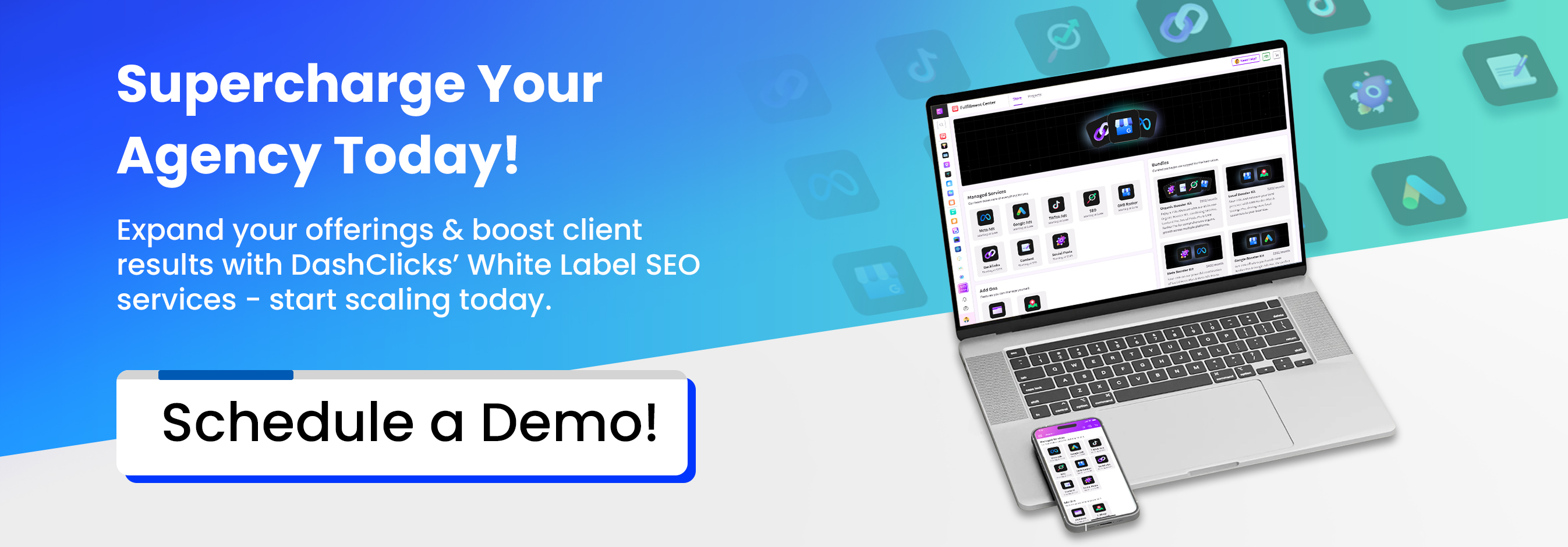

When Facebook Ads Stop Scaling: How White Label Experts Revive Underperforming Accounts
You’ve done everything right. You identified a winning campaign, your creatives were hitting the mark, and your client was thrilled with the results. So you did what any savvy agency would do: you started to scale. But then, something went wrong. The returns started to diminish. Your cost per acquisition (CPA) crept up, and the once-impressive return on ad spend (ROAS) began to dip.
This is the “scaling stall”—a frustrating plateau where increasing your ad spend no longer yields proportional returns. It's a common challenge that even the most experienced in-house teams face. Suddenly, you're dealing with sky-high costs per mille (CPMs), declining click-through rates (CTRs), and the dreaded ad fatigue. You're spending more, but getting less.
Several factors can trigger this stall. It could be due to recent changes in the platform’s algorithm, creative decay after weeks of the same visuals, or even audience saturation. Other times, the culprit is a technical issue, like a misconfigured pixel or tracking problem that skews your data. Whatever the cause, a stalled campaign can strain client relationships and put your agency’s reputation on the line.
When you hit this wall, it’s not always about a lack of skill. Often, it’s about a lack of bandwidth, specialized tools, or a fresh perspective. This is where white label Facebook Ads experts come in. They are the specialists who can diagnose the root cause of the problem and implement proven strategies to get your campaigns back on track.
In fact, according to WhiteDigital, agencies that use white label Meta services often report more stable ROAS, especially when they outsource during critical scaling phases.
What White Label Facebook Ads Experts Bring to the Table?
So, why can a white label Facebook Ads partner revive an account when an in-house team hits a wall? It comes down to a unique combination of experience, resources, and a specialized focus that many agencies can't replicate internally.
White label experts live and breathe Facebook ads. They manage dozens, if not hundreds, of accounts across various industries. This gives them a bird's-eye view of what’s working and what isn’t on the platform at any given moment. They’ve encountered the "scaling stall" pattern countless times and have developed tested frameworks for overcoming it. While your in-house team is focused on a handful of clients, these experts are gathering insights from a vast portfolio, allowing them to identify trends and solutions much faster.
They also bring a fresh perspective to creative and messaging. When an audience sees the same ad too many times, they tune it out. White label Facebook advertising providers have robust systems for rotating creatives, A/B testing copy, and experimenting with different ad formats like carousels, videos, and Reels. This constant cycle of refreshing content helps re-engage fatigued audiences and keeps campaigns performing at their peak.
Furthermore, these experts excel at the technical side of ad management. They conduct deep audience audits to find and prune overlapping segments, refresh lookalike audiences that have gone stale, and identify and exclude unprofitable demographics. They are masters of tracking and analytics, capable of fixing broken pixels, setting up custom conversion events, and ensuring everything is compliant with the latest privacy updates like iOS 14. This meticulous attention to data integrity ensures that your campaign decisions are based on accurate information.
Finally, they approach budget management with a level of sophistication that goes beyond simply increasing daily spend. They know when to scale horizontally (spreading the budget across multiple ad sets) versus vertically (increasing the budget on a single winning ad set). They test different pacing strategies and reallocate funds between various campaign objectives—like conversions, catalog sales, and engagement—to maximize overall performance. This strategic approach ensures that every dollar is working as hard as possible to achieve your client’s goals.
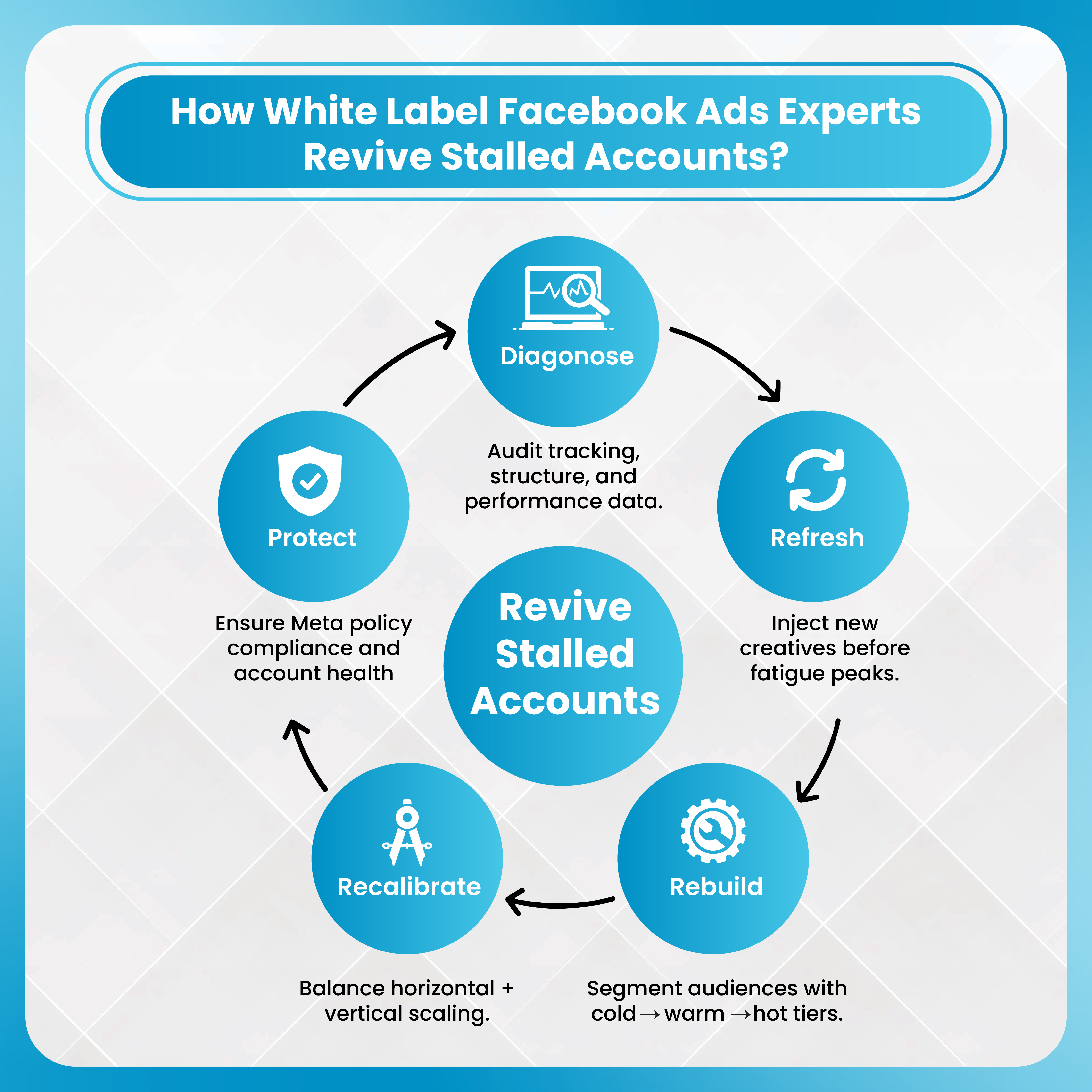
Strategic Fixes White Label Experts Use to Push Scaling Again
When a campaign stalls, it’s rarely due to a single issue. More often, it’s a combination of factors that requires a multi-faceted solution. Facebook ads services experts use a systematic approach to diagnose and fix underperforming accounts.
Here are some of the key strategies they employ -
1. Creative Refresh Cycles With Predictive Fatigue Modeling
One of the most common reasons for a campaign to stall is ad fatigue. Even the best creative has a limited shelf life. White label Facebook ads experts don’t wait for performance to plummet before taking action. They use predictive fatigue modeling to stay ahead of the curve. By monitoring key indicators like rising ad frequency and declining click-through rate (CTR), they can anticipate when an ad is about to lose its effectiveness.
This allows them to implement a proactive, creative refresh cycle. They have a pipeline of fresh ad copy, images, and videos ready to be deployed. By rotating these assets before performance drops significantly, they maintain momentum and keep the audience engaged. This approach is far more effective than reacting after the damage is already done.
2. Multi-Layer Audience Restructuring
Effective targeting is the backbone of any successful Facebook ad campaign. When scaling stalls, the problem often lies within the audience structure. White label Facebook ads experts perform a deep dive to restructure and optimize targeting. This often involves building a hierarchical audience stack.
This stack is typically tiered:
- Cold Audiences: Broad targeting based on interests, behaviors, and demographics to attract new customers.
- Warm Audiences: People who have engaged with the brand in some way (e.g., visited the website, watched a video) but haven't converted.
- Hot Audiences (Retargeting): Individuals who have shown strong intent, such as adding a product to their cart or initiating checkout.
Experts also refine lookalike audiences by using higher-quality seed lists and layering them with additional interest and behavioral signals. This multi-layered approach ensures that the right message is delivered to the right person at the right stage of their journey, maximizing relevance and conversion rates.
3. Rescuing Tracking and Data Foundations
Inaccurate data leads to poor decisions. A common cause of scaling issues is a breakdown in tracking. This could be a misconfigured Facebook pixel, broken conversion events, or a failure to comply with privacy updates like Apple's SKAdNetwork.
White label Facebook Advertising experts begin by conducting a thorough audit of the entire tracking setup. They validate pixel implementation, ensure all standard and custom events are firing correctly, and troubleshoot any discrepancies. If the business has a mobile app, they verify that the app tracking is properly configured. By restoring the integrity of the data foundation, they ensure that performance metrics are accurate, which is essential for making informed optimization decisions.
4. Smart Budget Scaling: Horizontal vs. Vertical
Simply pouring more money into a single winning campaign—a strategy known as vertical scaling—can quickly lead to diminishing returns. Facebook Ads services specialists often employ a more nuanced approach that combines both vertical and horizontal scaling.
- Vertical Scaling: Gradually increasing the budget on a high-performing ad set to maximize its reach.
- Horizontal Scaling: Duplicating a successful ad set and targeting a new, similar audience. This allows you to expand your reach without oversaturating your original audience.
They also experiment with different budget pacing strategies, such as setting spend caps or using campaign budget optimization (CBO) to let Facebook’s algorithm automatically distribute the budget to the best-performing ad sets. This flexible and data-driven approach to budget allocation helps maintain a healthy ROAS even as spend increases.
5. Ad Account Hygiene and Policy Safety
A suspended ad account can be catastrophic for an agency and its clients. As campaigns scale, the risk of inadvertently violating one of Meta’s many advertising policies increases. White label Facebook ads experts are well-versed in these policies and prioritize ad account hygiene.
They regularly review all active creatives and ad sets to identify and pause anything that might be close to a policy violation. They ensure that all landing pages are compliant and that the ad copy is clear and not misleading. By maintaining a clean and compliant ad account, they provide a crucial safety net that protects your client’s business and your agency’s relationship with Meta.

How Revived Accounts Lead to Retained Clients?
- Fixing an underperforming ad account boosts a client's ROAS and strengthens your agency’s value proposition.
- When campaigns stall, client confidence can waver; bringing in white label Facebook ads experts demonstrates a proactive commitment to success.
- Successful intervention can turn uncertainty into a strong testament to your agency’s resourcefulness.
- Effective new strategies produce measurable results, like rising ROAS and falling CPA, which rebuild client trust.
- White label Facebook ads partners provide continuity, ensuring campaigns run smoothly even during internal agency changes like staff turnover.
- Stability in service delivery is a key factor in client retention.
- A proactive problem-solving approach impresses clients more than reactive firefighting.
- Agencies that anticipate issues and plan solutions are seen as strategic partners rather than just service providers.
- Clients who view your agency as integral to their growth are more likely to stay long-term and increase their investment.
Key Metrics to Track During a Revival
To effectively demonstrate the impact of these interventions, it's crucial to track the right KPIs. Here are some of the most important metrics to monitor:
- ROAS vs. Ad Spend Growth: Look at how ROAS trends as you increase spend, not just the raw number.
- CPA/CPL per Audience Segment: This helps identify which audiences are responding best to the new strategies.
- CTR and Relevance Score: These metrics indicate whether your creative refresh is resonating with the audience.
- Ad Frequency: Keep a close eye on this to prevent the new creatives from quickly fatiguing.
- Conversion Rate and Lead Quality: It's important to ensure that you're not just driving more conversions, but that they are high-quality leads.
Case Study Snapshot: A Real-World Revival
To illustrate how these strategies work in practice, let's look at an example inspired by a ScroogeFrog case study involving an e-commerce dropshipping brand. The brand had a solid history of performance, but its Facebook ad campaigns suddenly hit a wall. Their ROAS plummeted, and their CPA skyrocketed, making it nearly impossible to scale profitably.
An expert team was brought in to revive the account. Here’s a breakdown of the steps they took:
- Comprehensive Audit: The first step was a deep dive into the ad account. They analyzed historical data, reviewed the existing audience structure, and audited the tracking setup. This revealed several issues, including significant audience overlap and ad fatigue.
- Creative Refresh: The team immediately launched a creative refresh, introducing new ad formats and messaging to re-engage the target audience.
- Audience Restructuring: They rebuilt the audience funnels, creating distinct cold, warm, and hot tiers. They also created new lookalike audiences based on high-value customer segments.
- Tracking Fixes: The audit uncovered a few inconsistencies in the pixel tracking, which were promptly fixed to ensure data accuracy.
- Gradual Budget Ramping: With the new structure in place, they began to gradually increase the budget, using a combination of horizontal and vertical scaling to maintain efficiency.
The results were impressive. Within a few weeks, the campaigns stabilized, and the brand was able to regain its scaling momentum. This revival not only saved the account but also solidified the agency’s relationship with the client, proving their ability to overcome even the toughest challenges.
What to Look for in a White Label Facebook Ads Partner?
Choosing the right white label Facebook ads partner is crucial for success. Not all providers are created equal. Here are some key qualities to look for:
- Proven Track Record: Ask for case studies and data that demonstrate their ability to revive underperforming Facebook ad accounts.
- Strong Creative Capabilities: They should have a robust process for creating and testing new ad creatives to combat fatigue.
- Technical Expertise: Ensure they have deep knowledge of tracking, analytics, and Meta's advertising policies.
- Transparent Reporting: The partner should provide clear, detailed reports that show the impact of their work and benchmark performance against industry standards.
- Compliance Awareness: They must be up-to-date on all of Meta's policies to ensure your client's account remains safe and compliant.
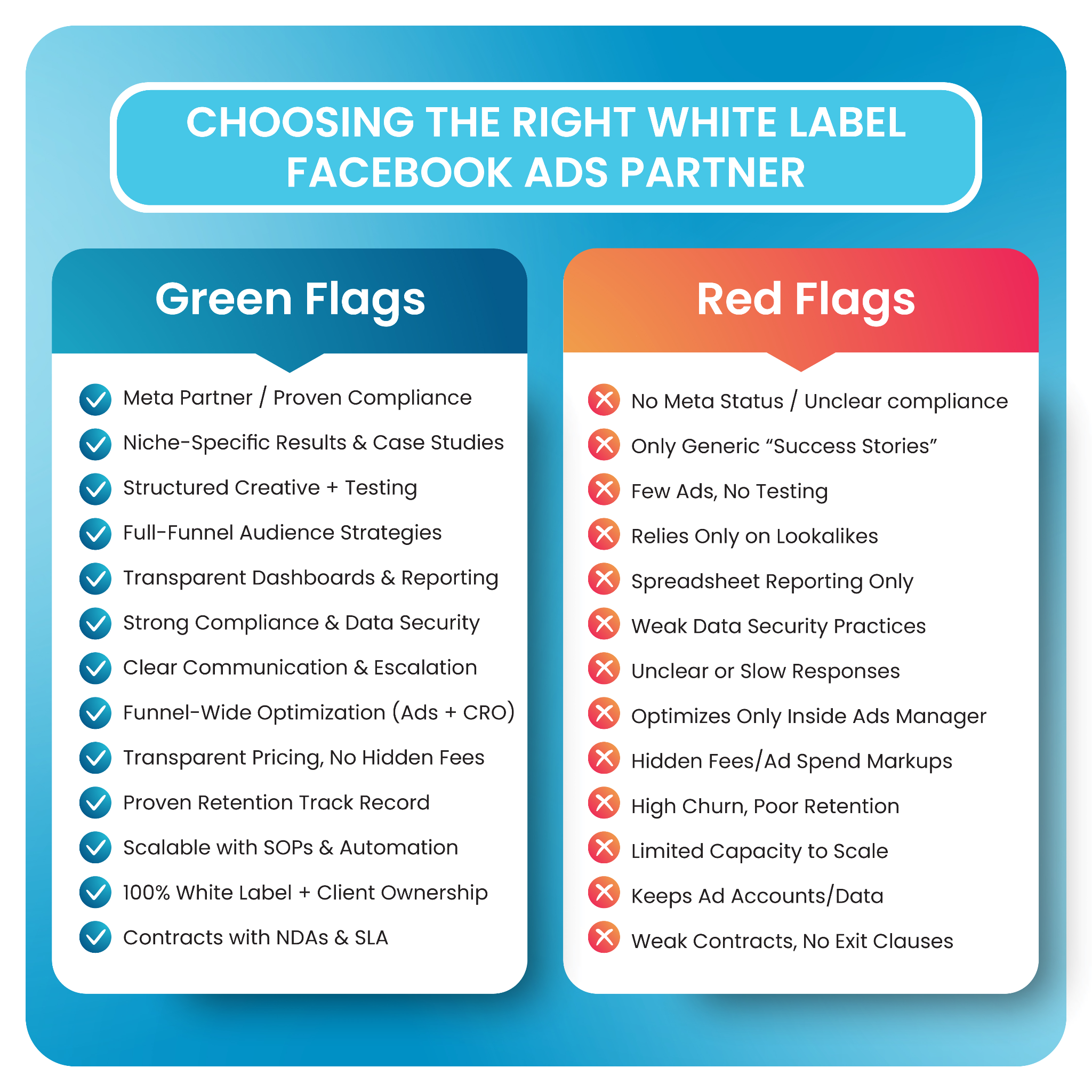
How DashClicks Revives Stalled Campaigns?
When your agency's Facebook ad campaigns hit a scaling plateau, you need a partner with a proven system for reigniting growth. DashClicks offers one of the best white label Facebook ads solutions, designed specifically to diagnose and resolve the complex issues that cause performance to stagnate. Our team of experts employs a data-driven framework that gets your client accounts back on track and positions your agency for long-term success.
It all starts with our advanced diagnostic process. We conduct deep audits to uncover the root causes of stagnation, whether it's creative fatigue, inefficient bidding strategies, or flawed audience targeting. From there, we implement our predictive scaling framework, which uses a combination of data-driven vertical and horizontal scaling techniques to ensure consistent ROAS as we expand your campaigns.
Our ongoing creative refresh systems and proactive fatigue detection prevent performance from dropping off, while our audience intelligence experts rebuild and refine audience segments to unlock new pockets of profitable reach. With deep expertise in Meta's evolving ad policies, we structure campaigns to scale safely and sustainably.
From Plateau to Profit with the Right Partner
Scaling Facebook ads is not just about spending more money. It’s a complex process that requires a sophisticated understanding of creative strategy, audience management, technical setup, and budget allocation. When your campaigns stall, it’s a sign that it’s time to bring in a specialist.
For agencies, the ability to rescue an underperforming ad account is a powerful value proposition. It demonstrates your commitment to your clients' success and differentiates you from competitors who may not have the resources to solve such complex problems. Partnering with a white label Facebook ads expert not only helps you revive stalled campaigns but also boosts client retention, opens up opportunities for referrals, and allows you to confidently upsell your Facebook ads services.
Take a moment to audit your client accounts for signs of a scaling stall. If you see performance starting to plateau, don't wait for it to become a crisis. By partnering with an expert team, you can turn a potential problem into a major win for your agency and your clients.
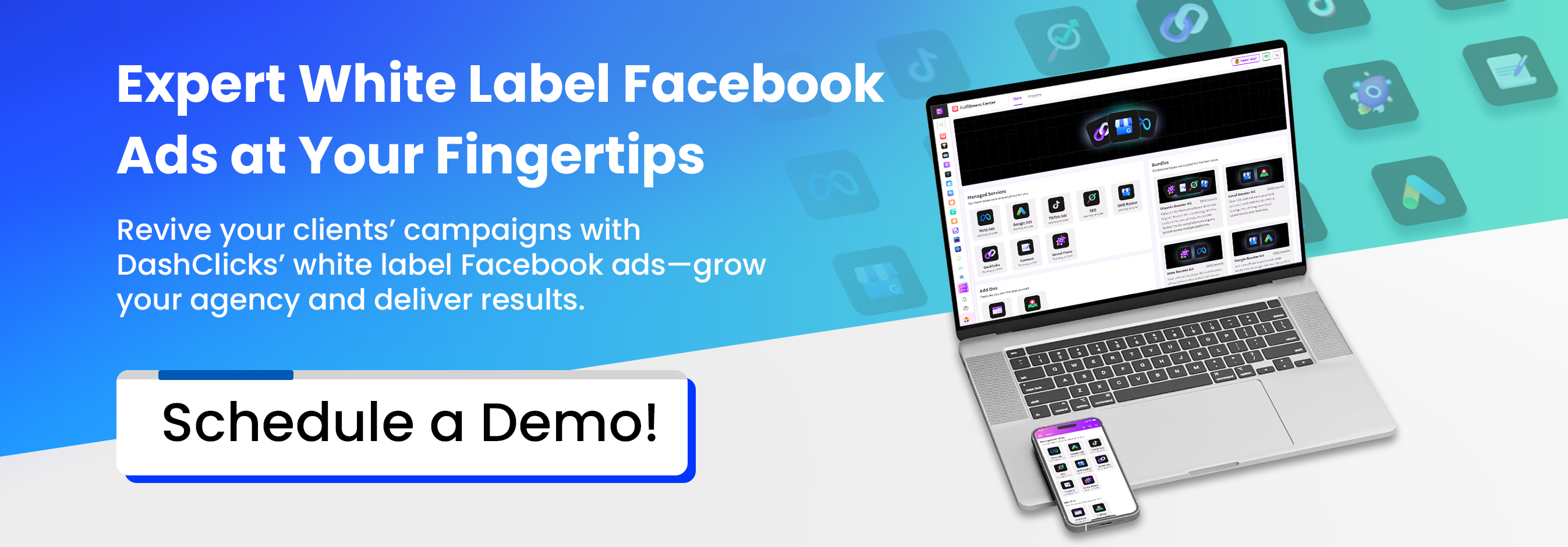

No results found.
Please try different keywords.
Get Started with
DashClicks Today
Get found online, convert leads faster, generate more revenue, and improve your reputation with our all-in-one platform.
.svg)
Unlimited Sub-Accounts
.svg)
Unlimited Users
.svg)
All Apps
.svg)
All Features
.svg)
White-Labeled
.svg)
Active Community
.svg)
Mobile App
.svg)
Live Support
.svg)
100+ Tutorials
.svg)
Unlimited Sub-Accounts
.svg)
Unlimited Users
.svg)
All Apps
.svg)
All Features
.svg)
White-Labeled
.svg)
Active Community
.svg)
Mobile App
.svg)
Live Support
.svg)
100+ Tutorials
.svg)
Unlimited Sub-Accounts
.svg)
Unlimited Users
.svg)
All Apps
.svg)
All Features
.svg)
White-Labeled
.svg)
Active Community
.svg)
Mobile App
.svg)
Live Support
.svg)
100+ Tutorials



.svg)
.svg)
.svg)
.svg)
.svg)


